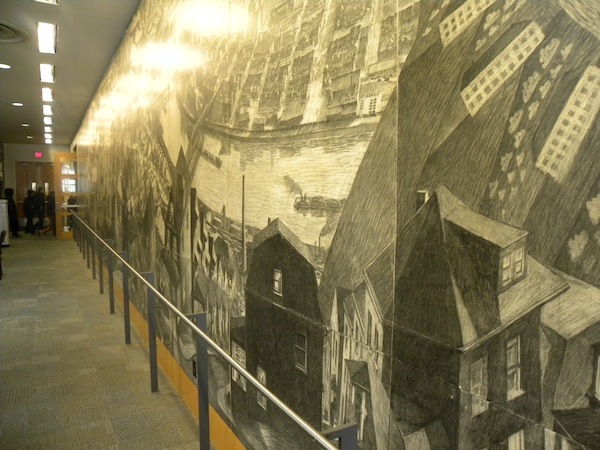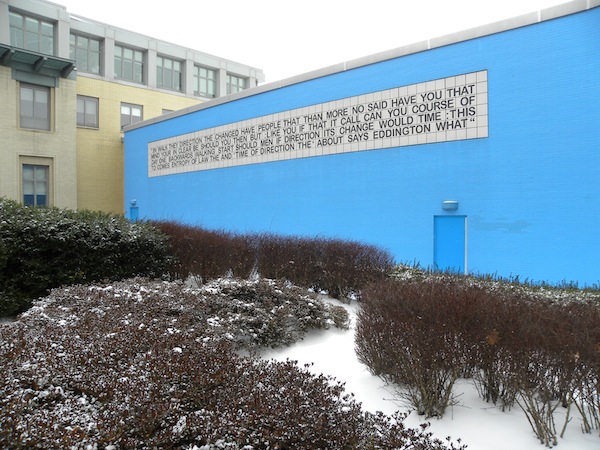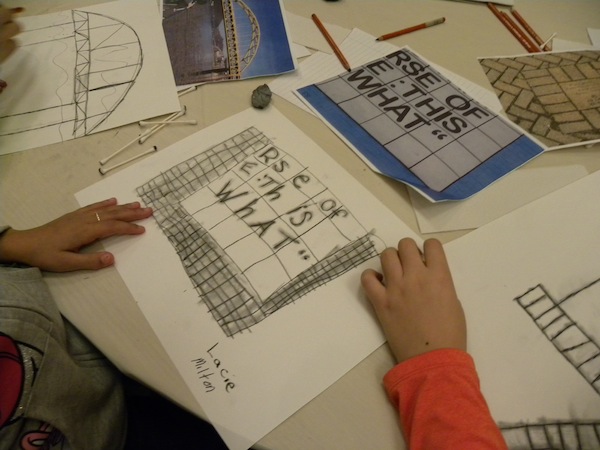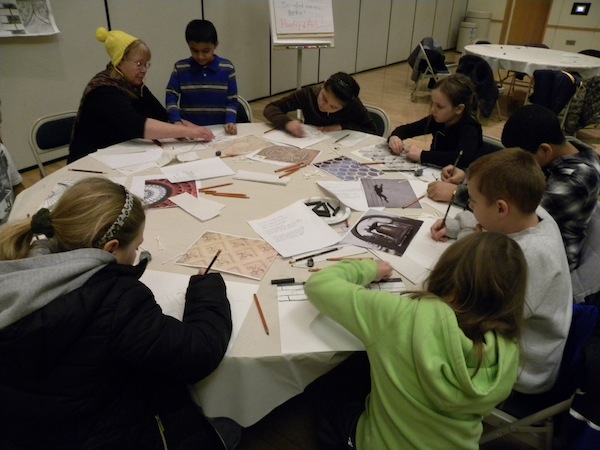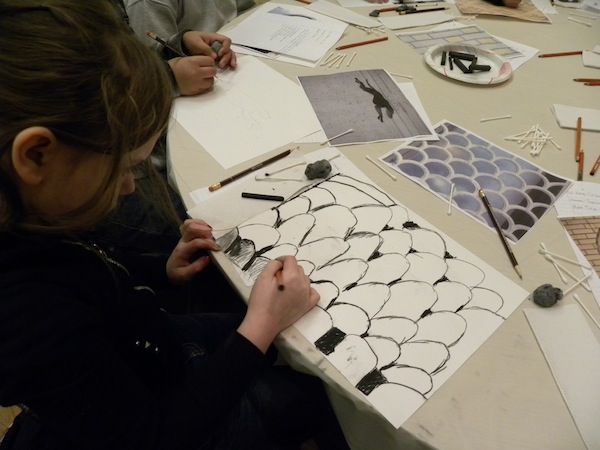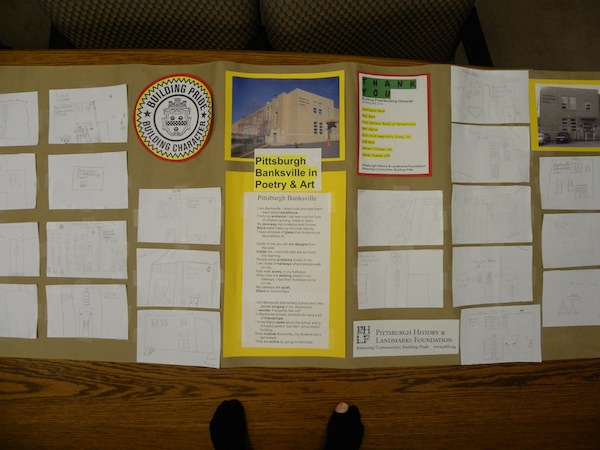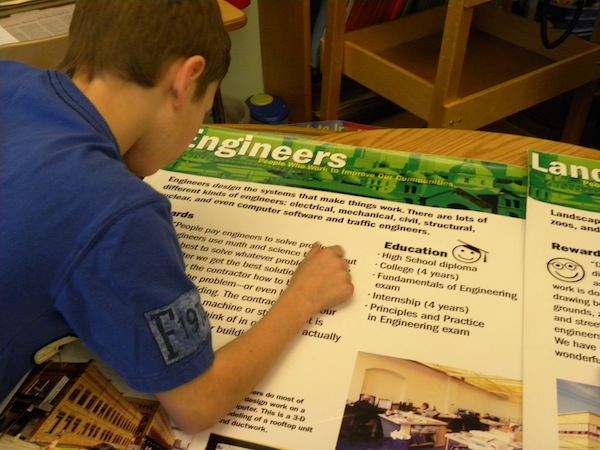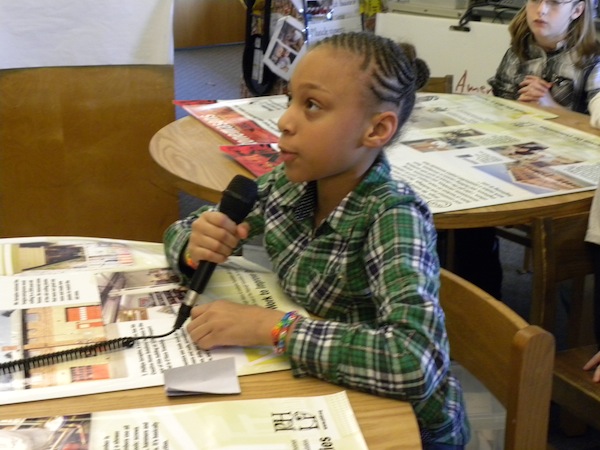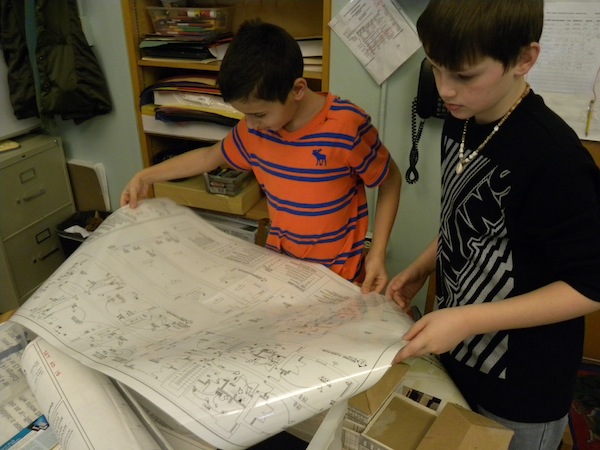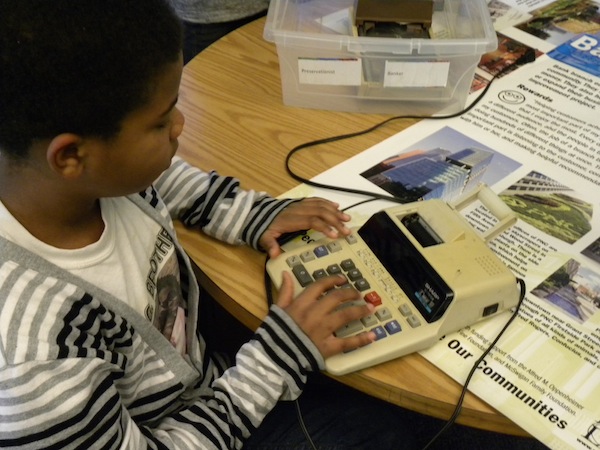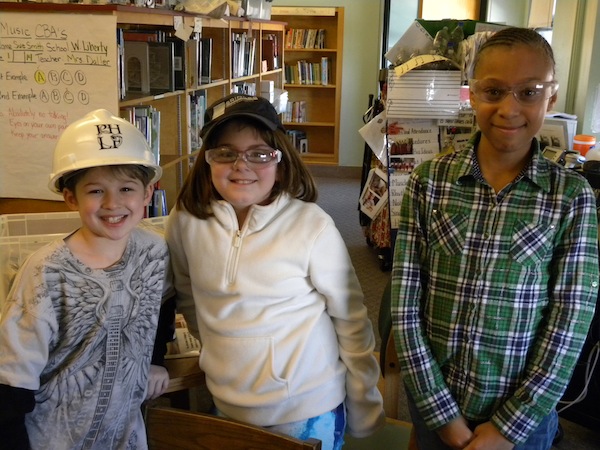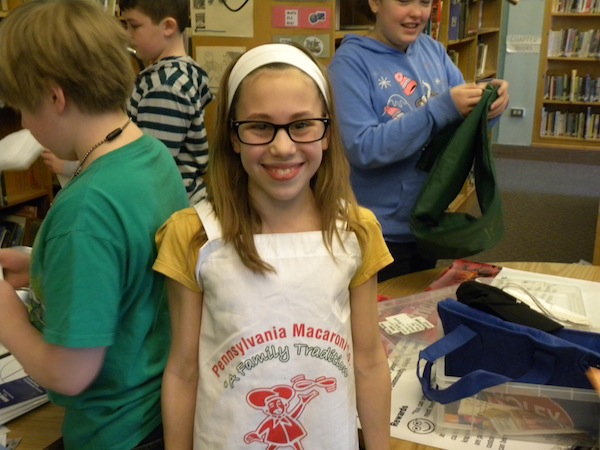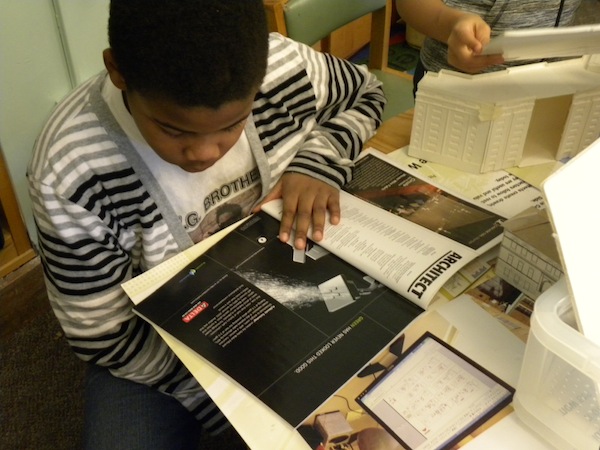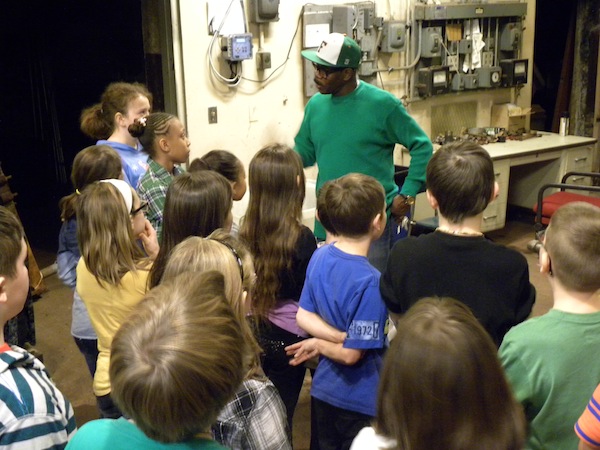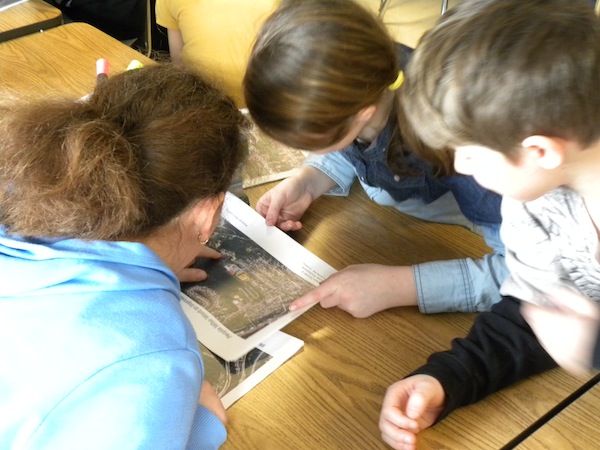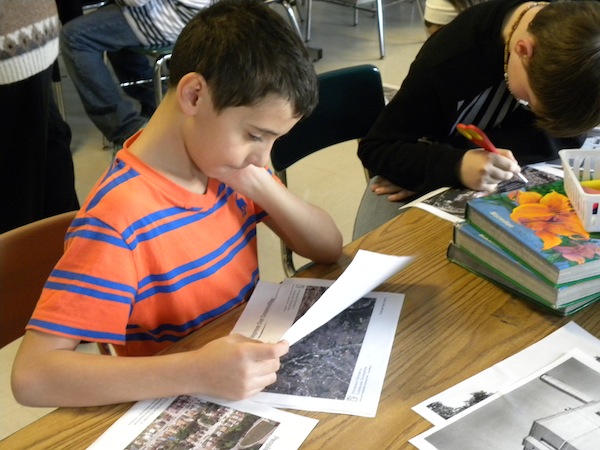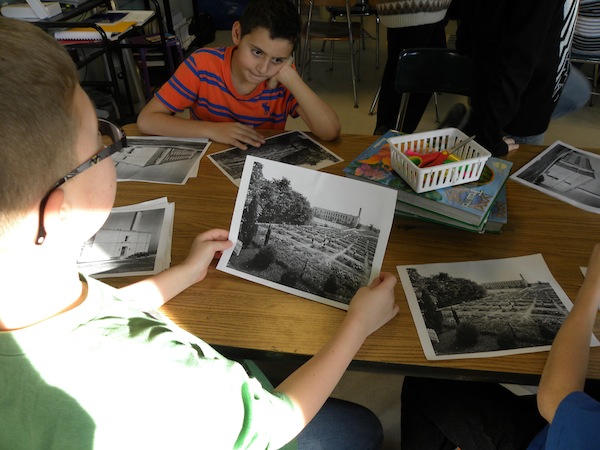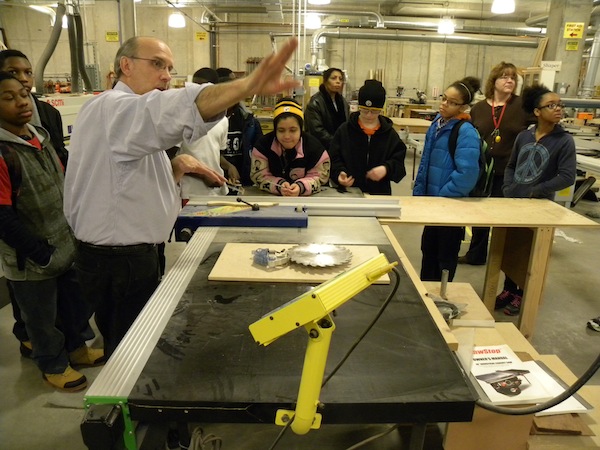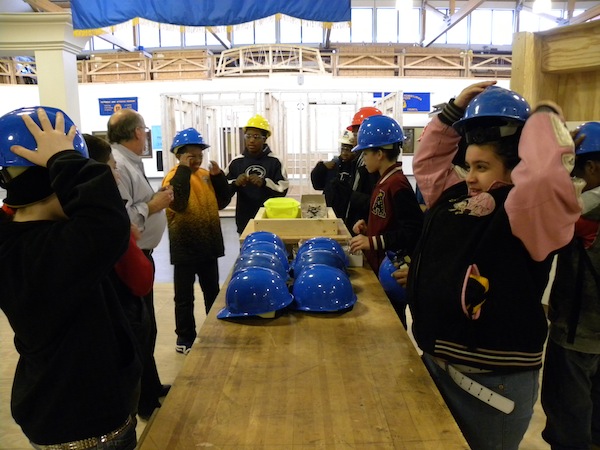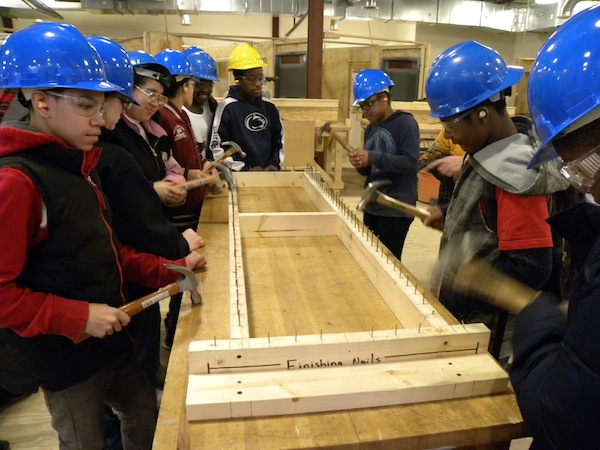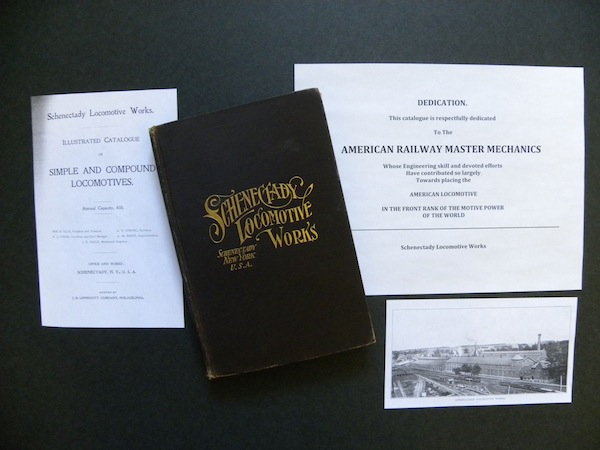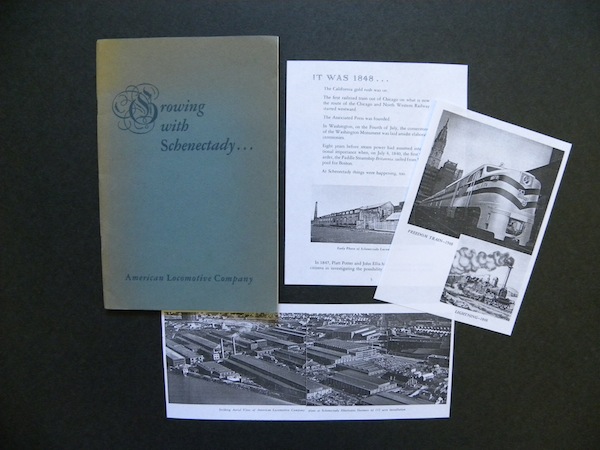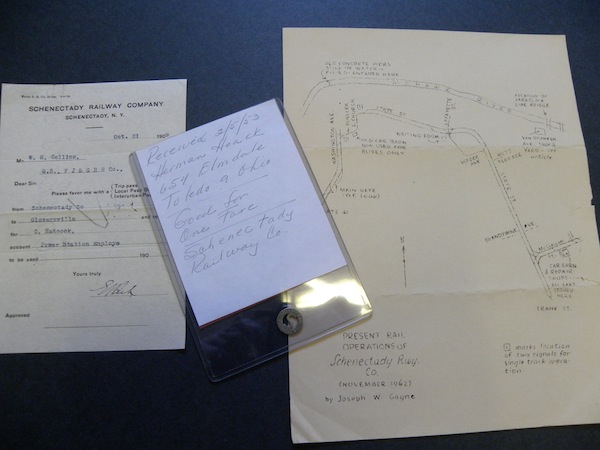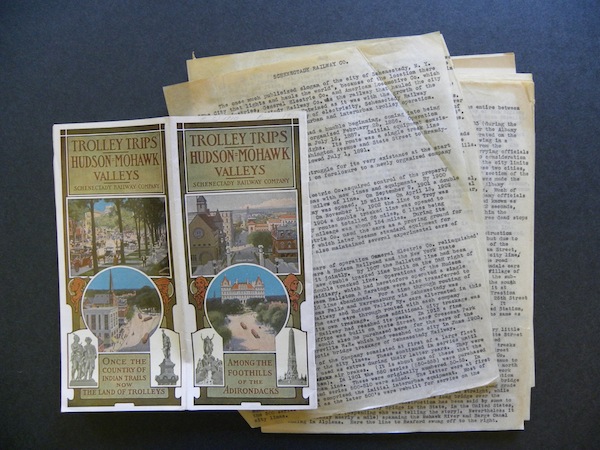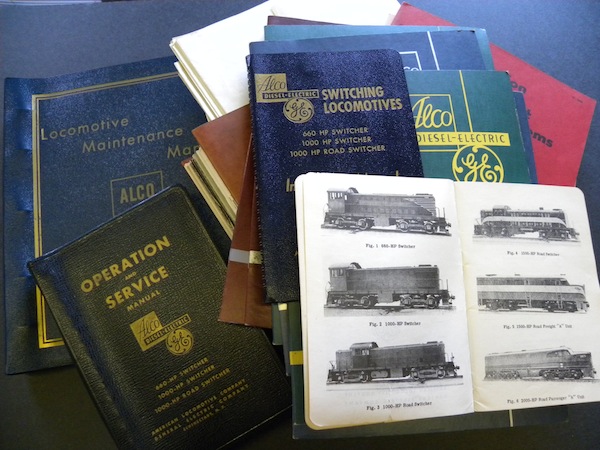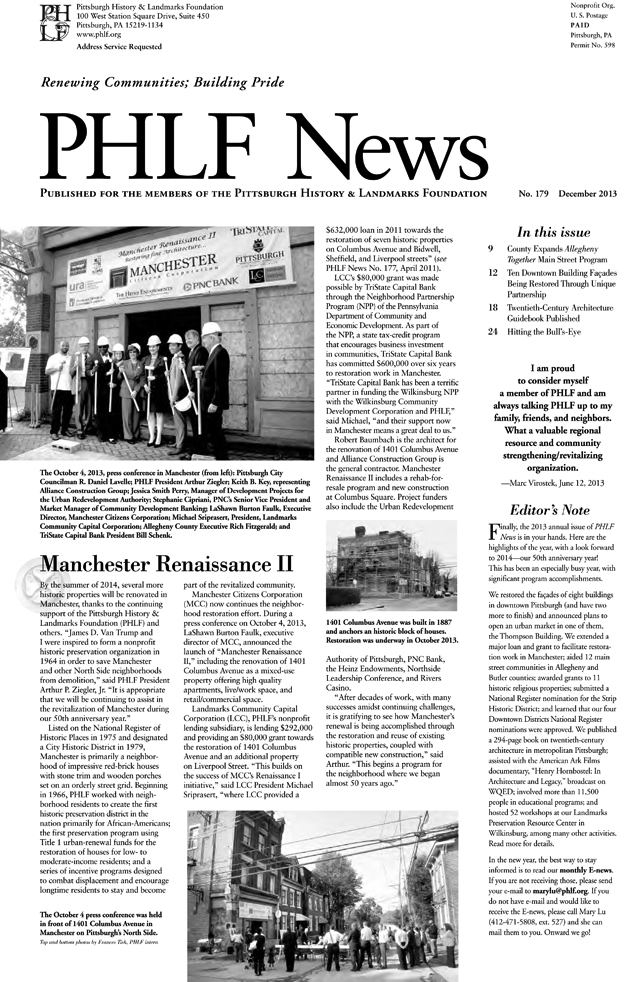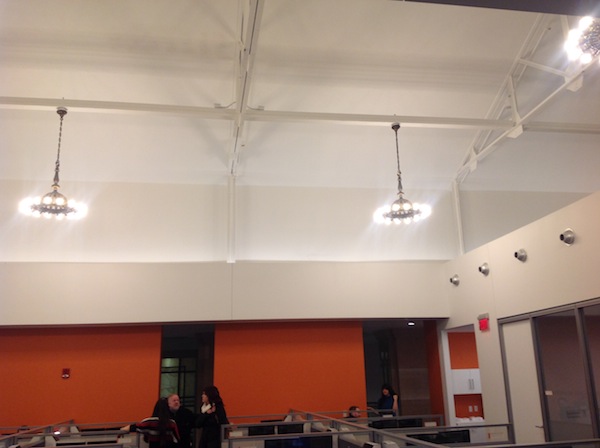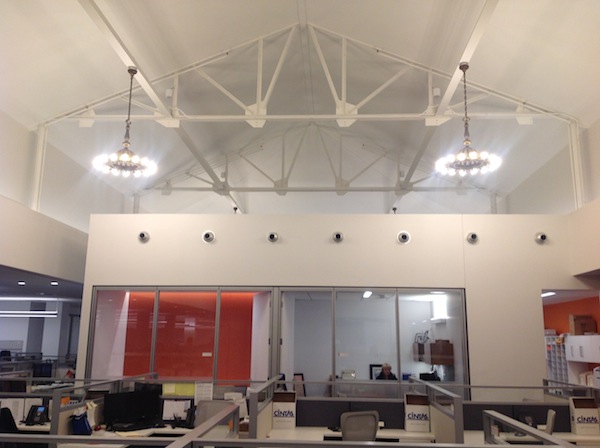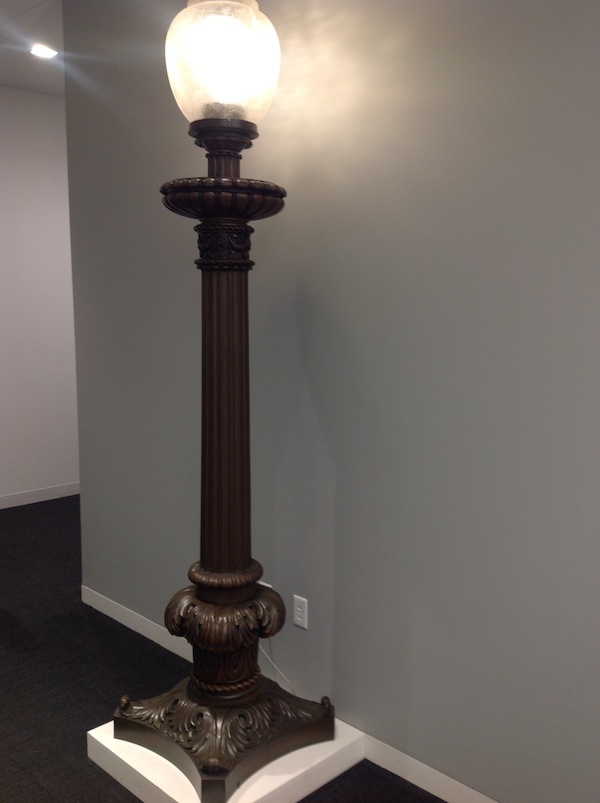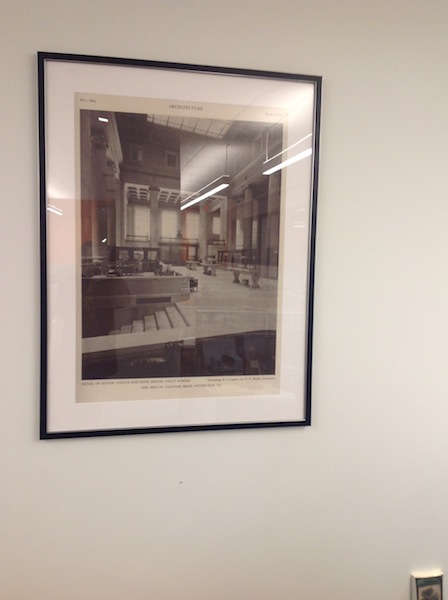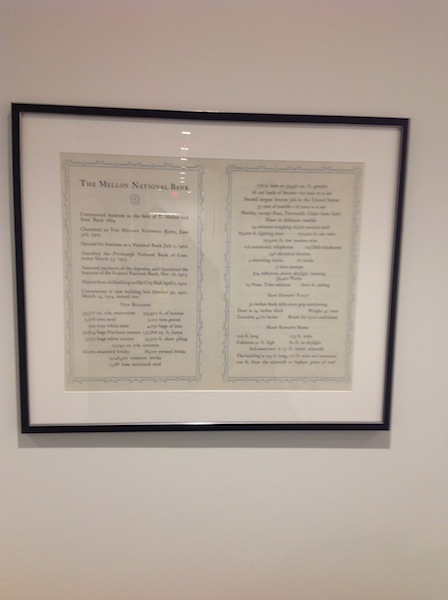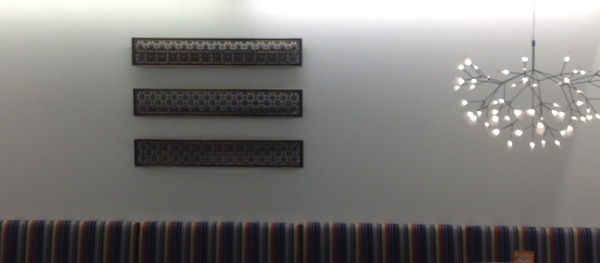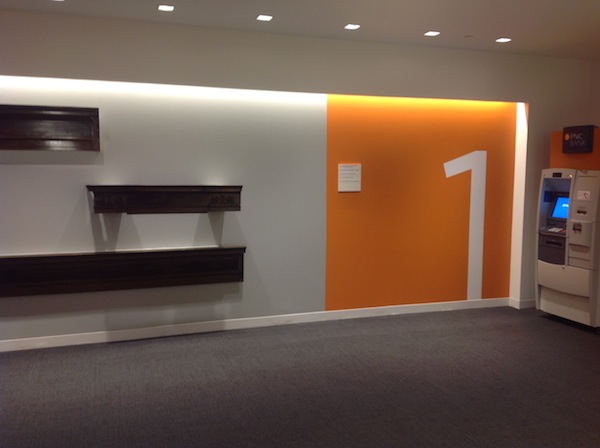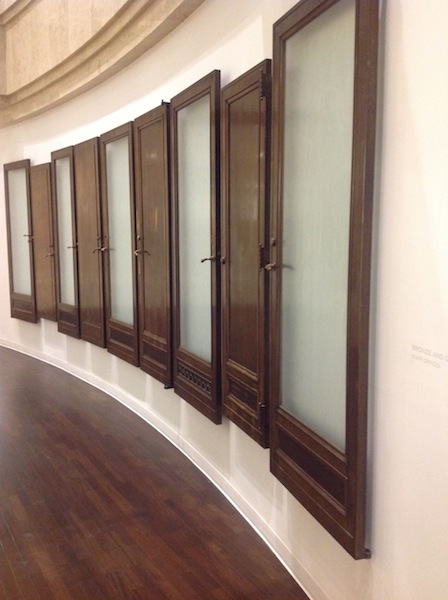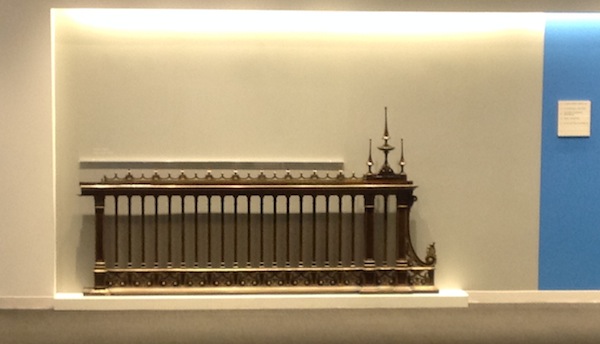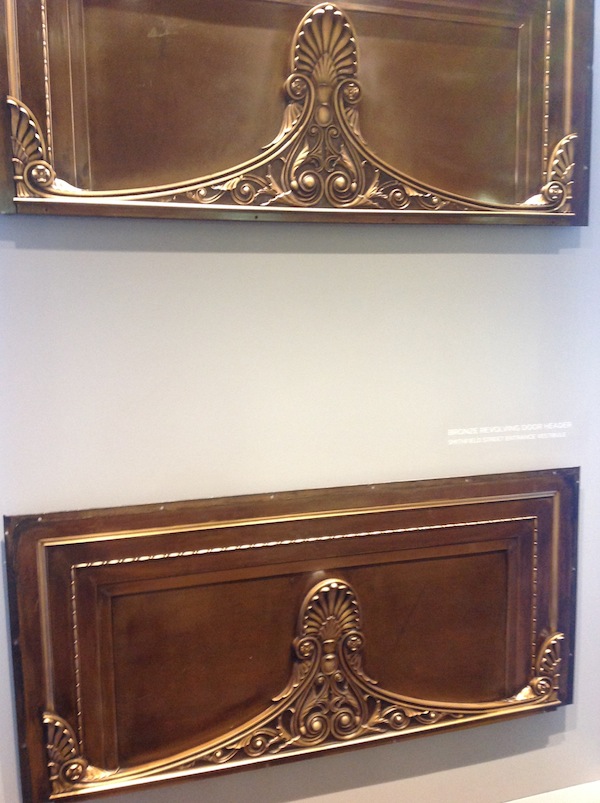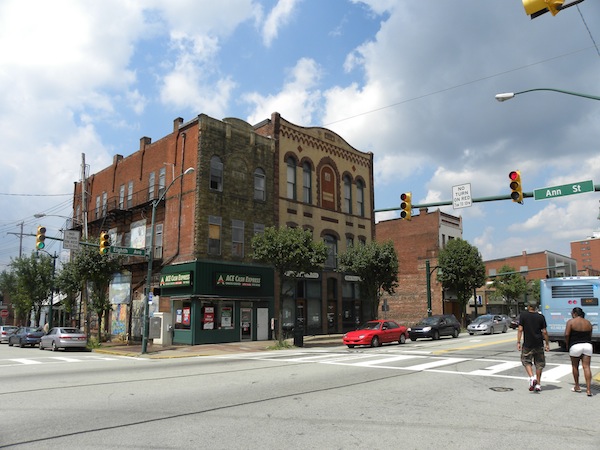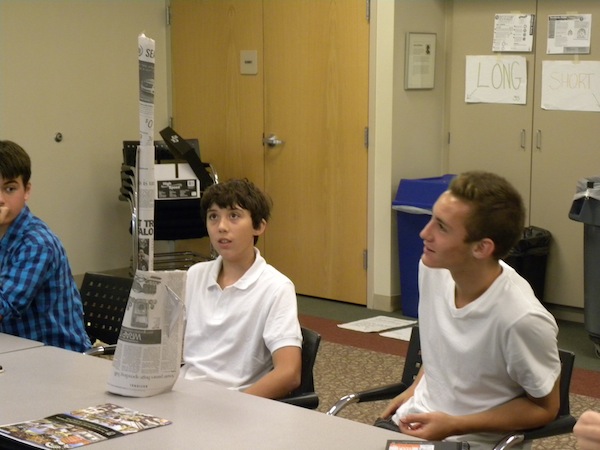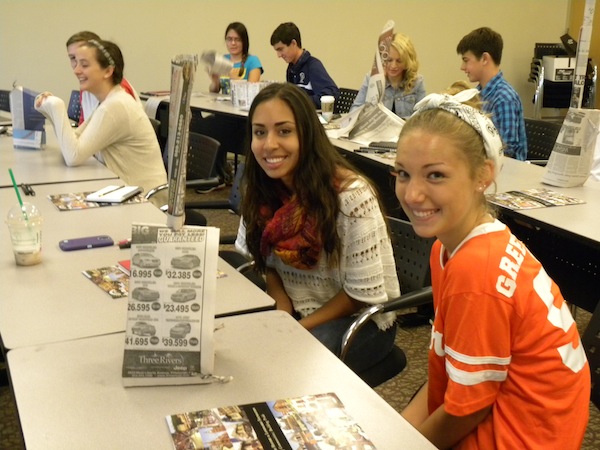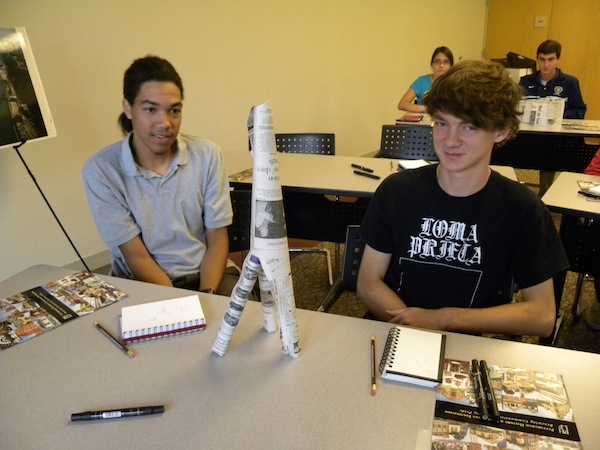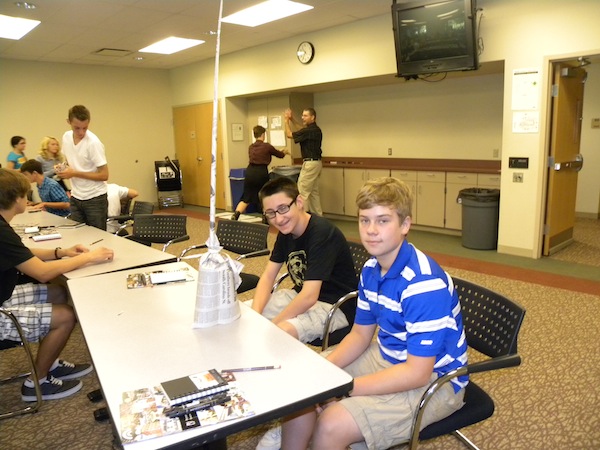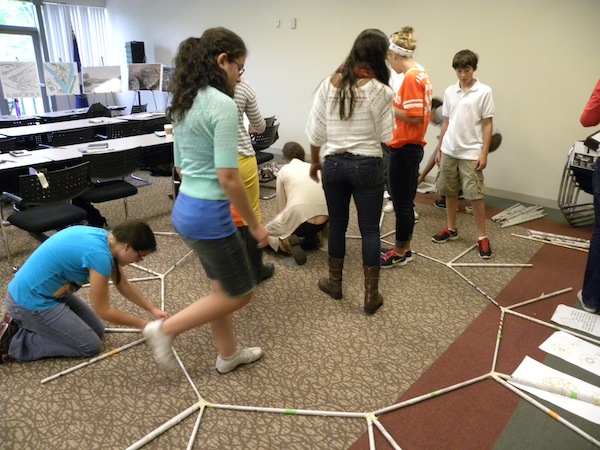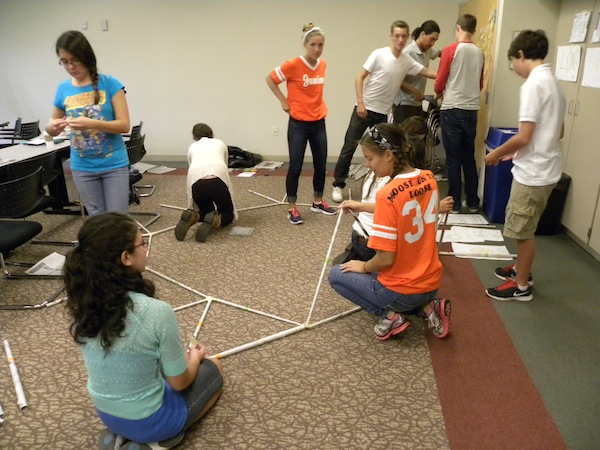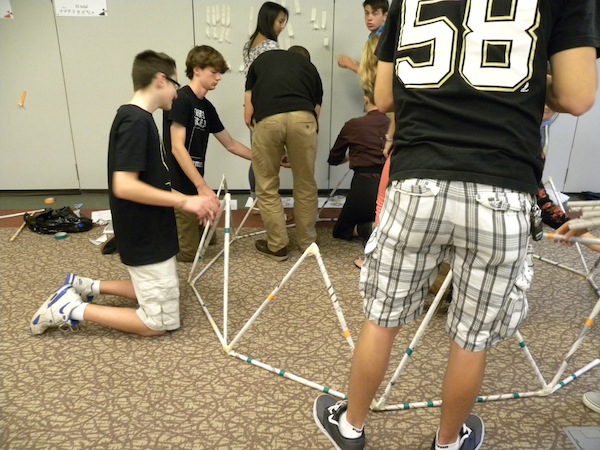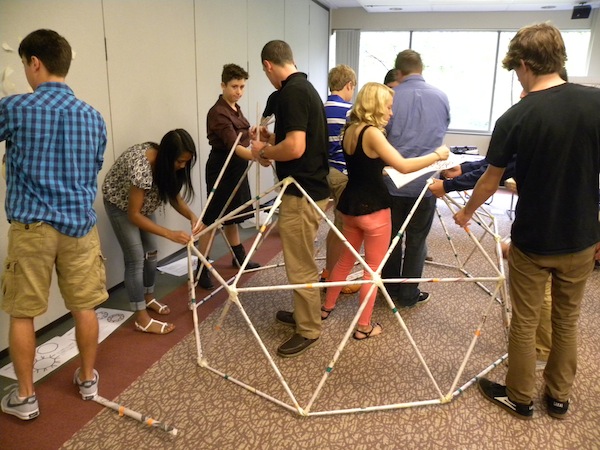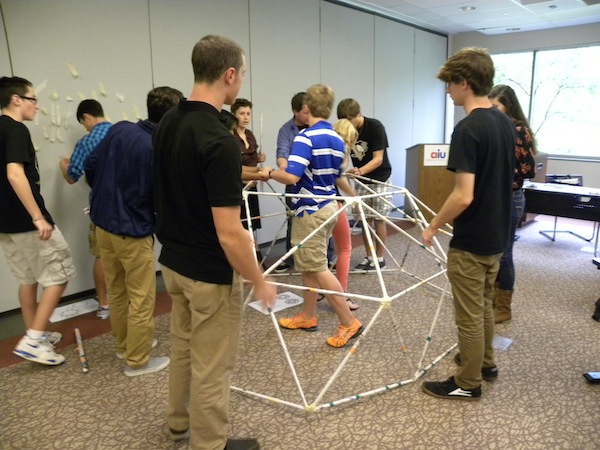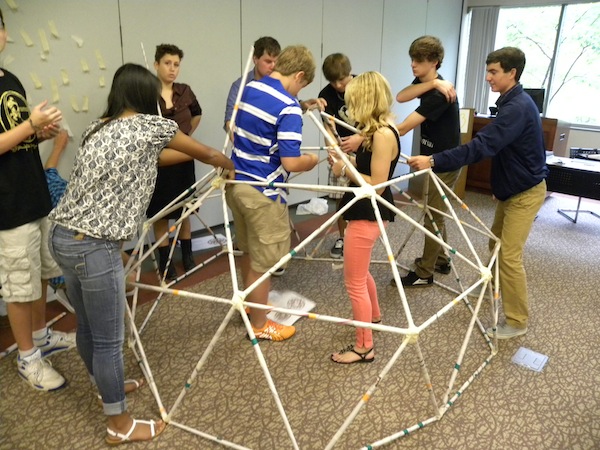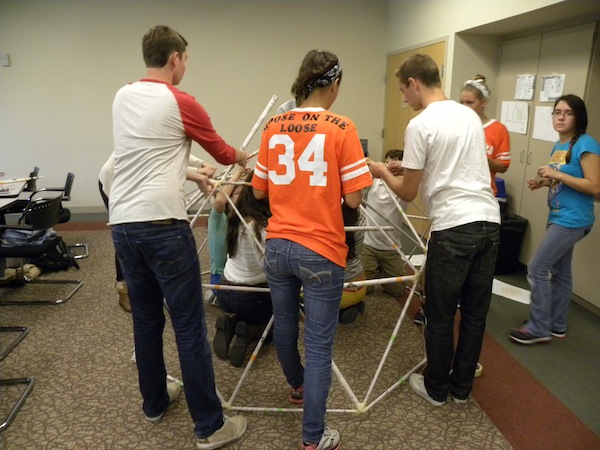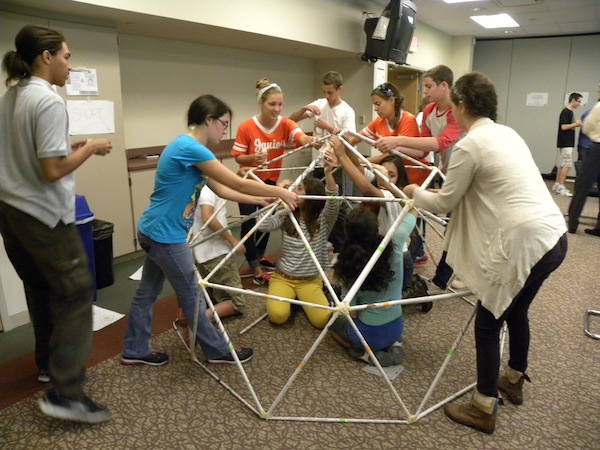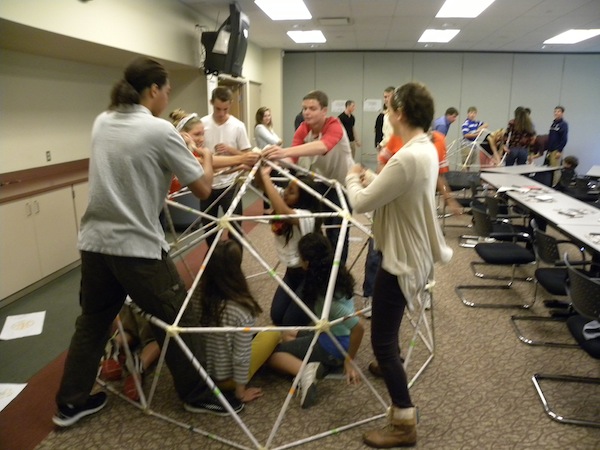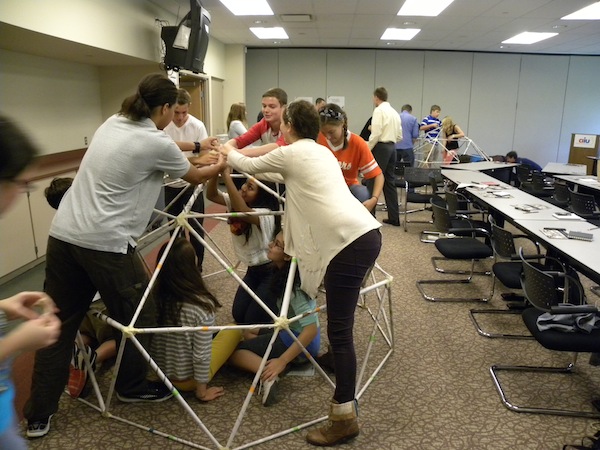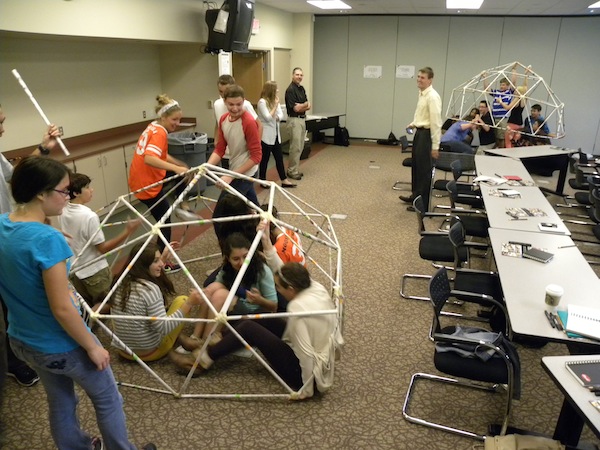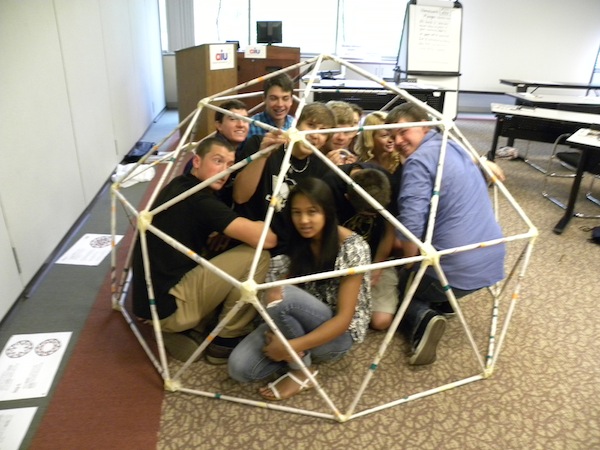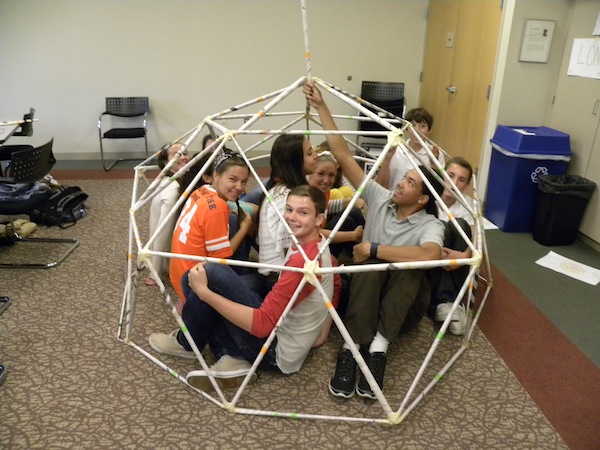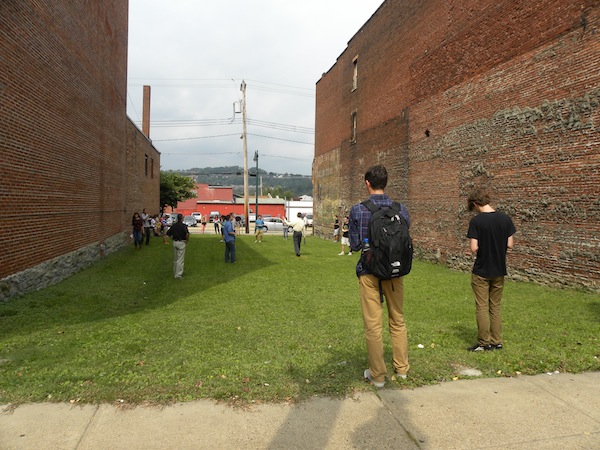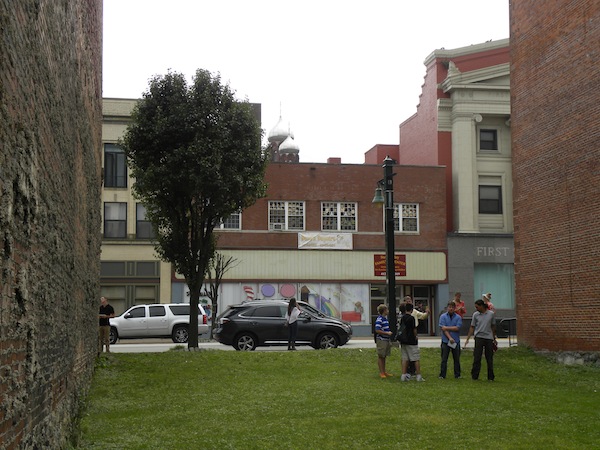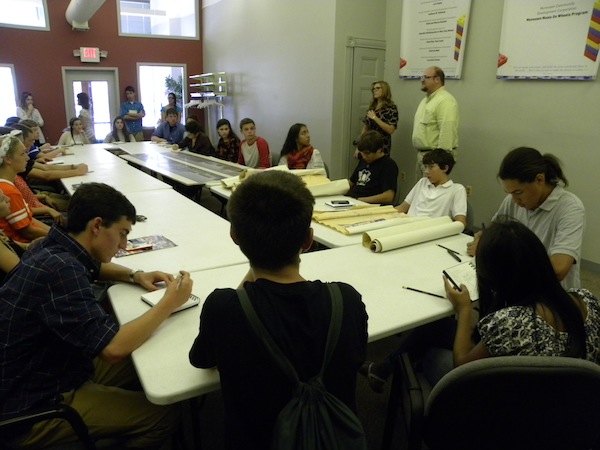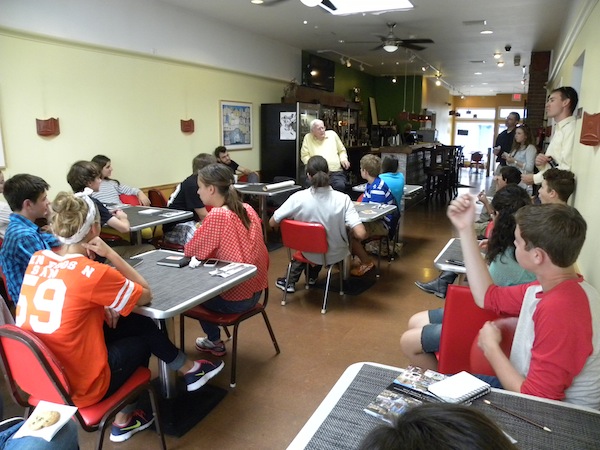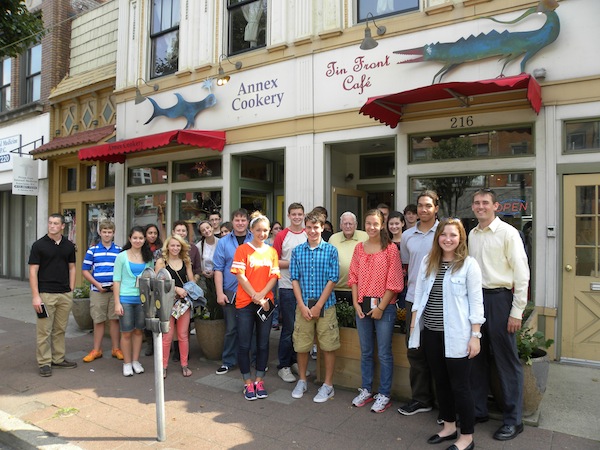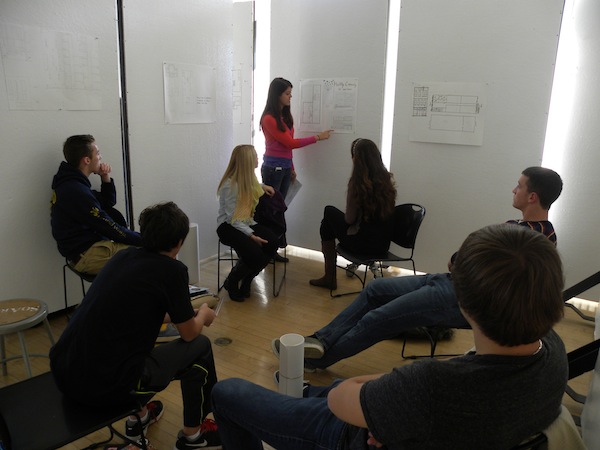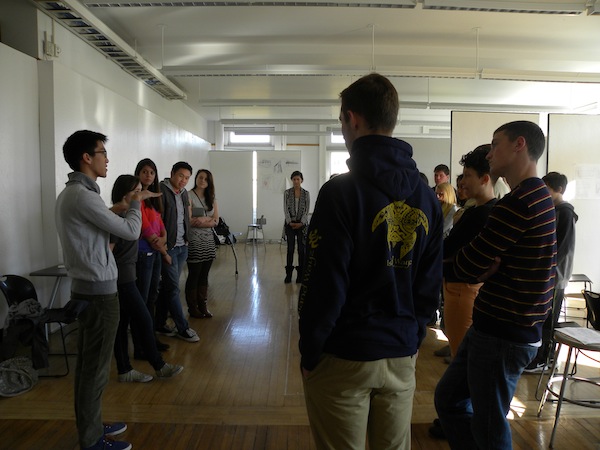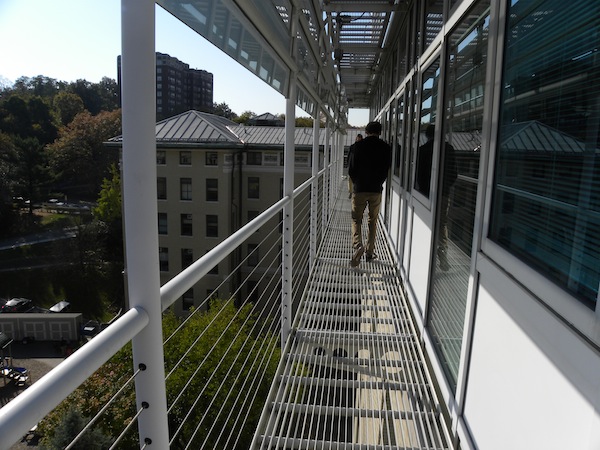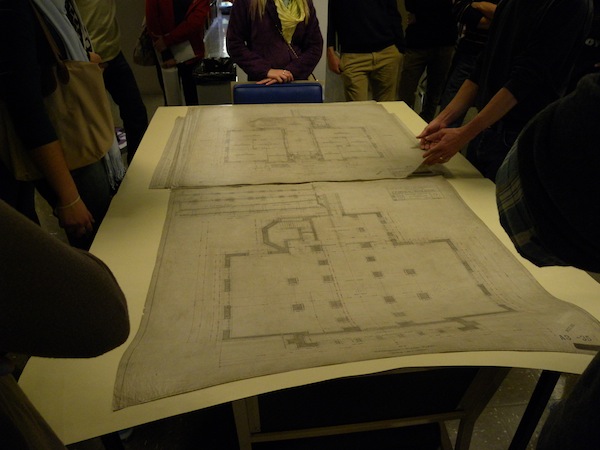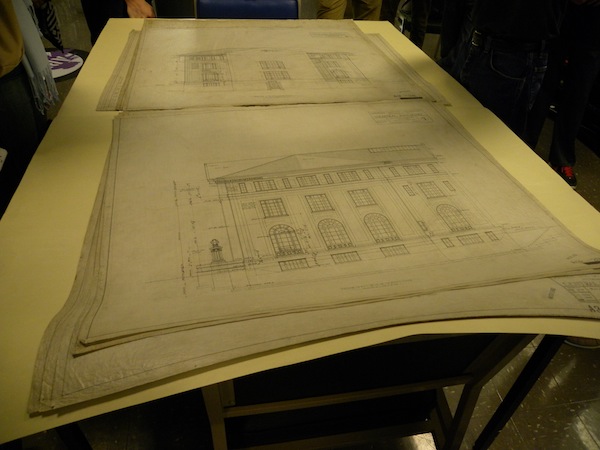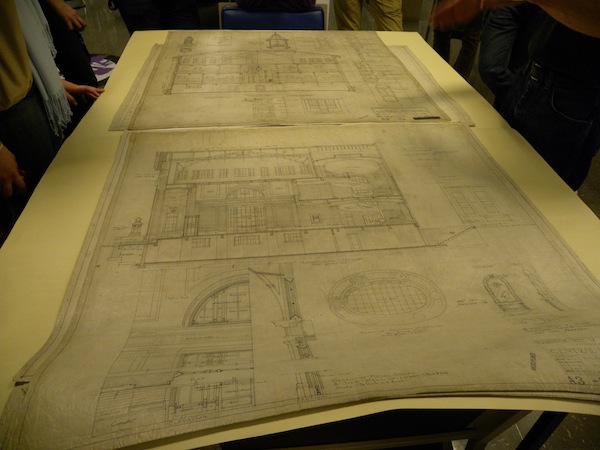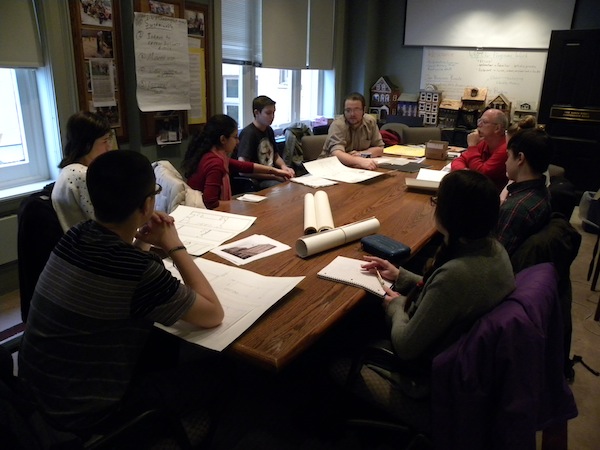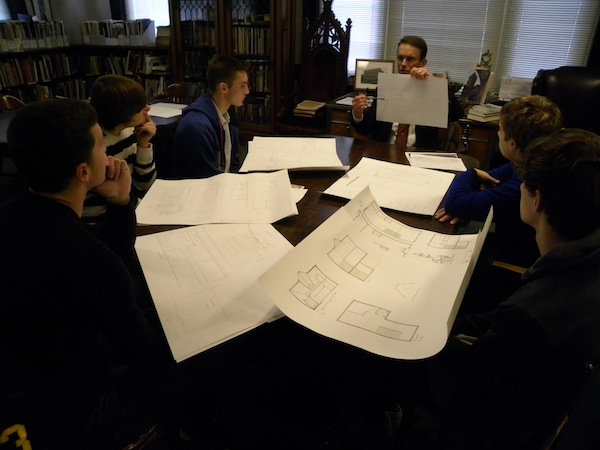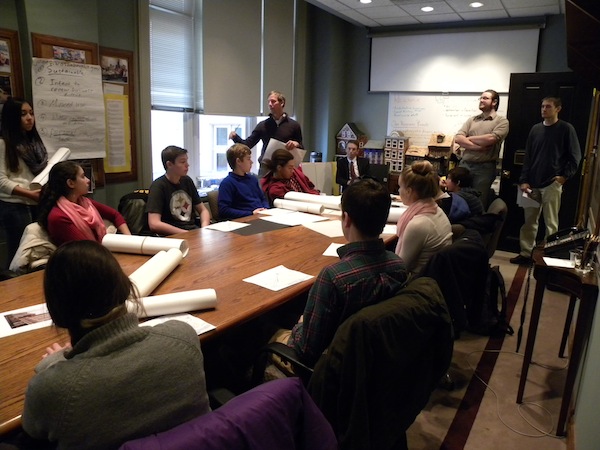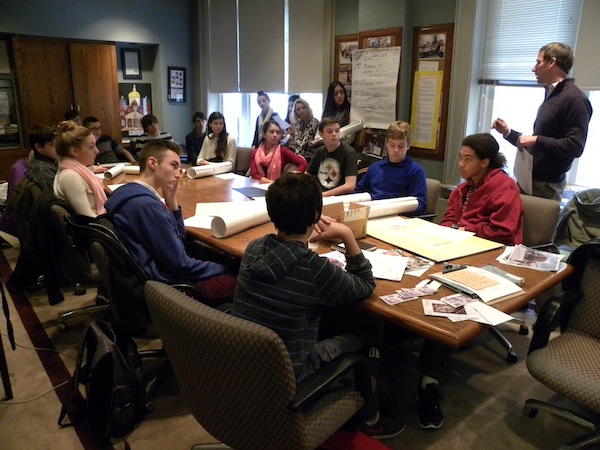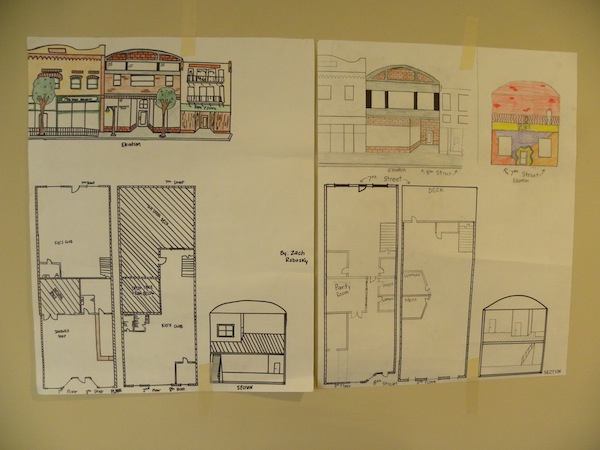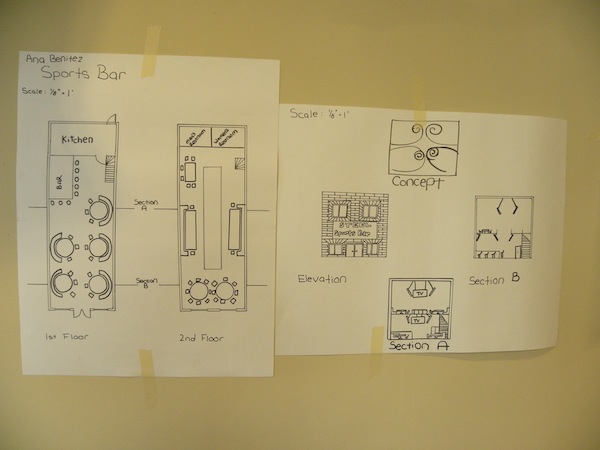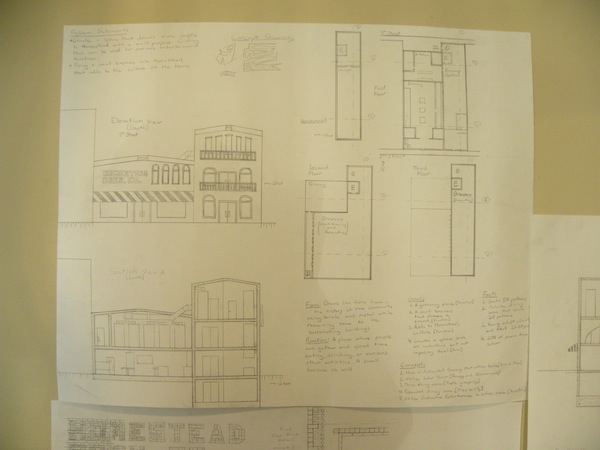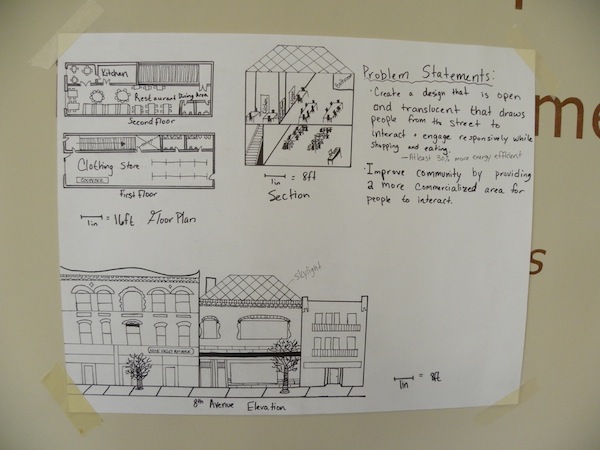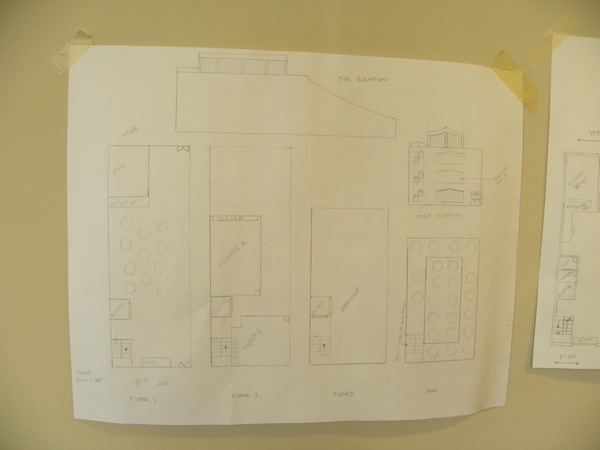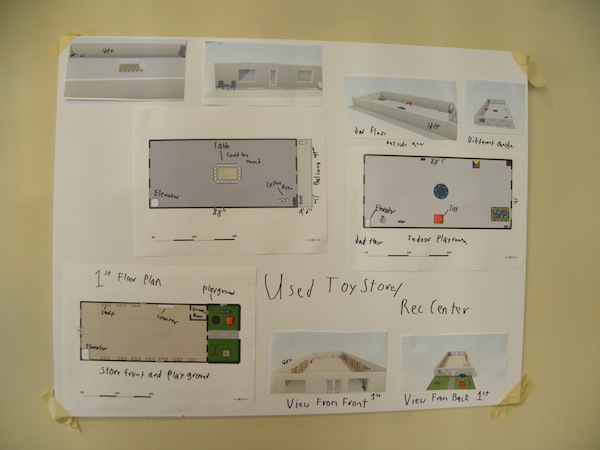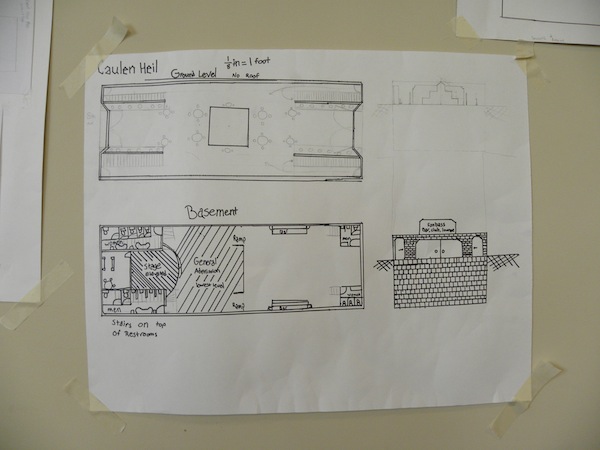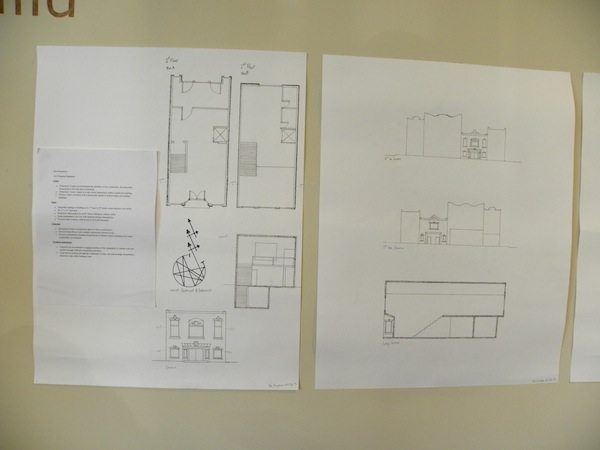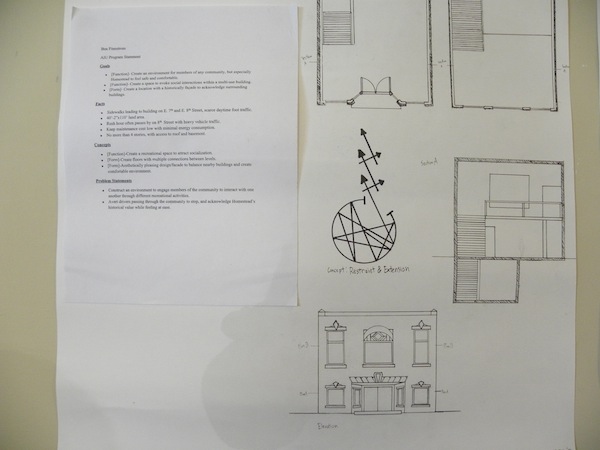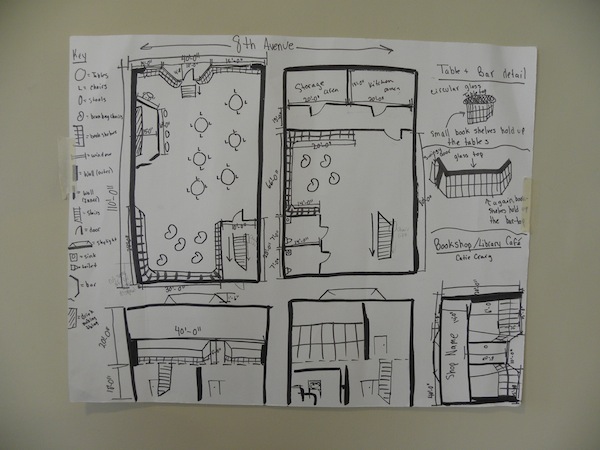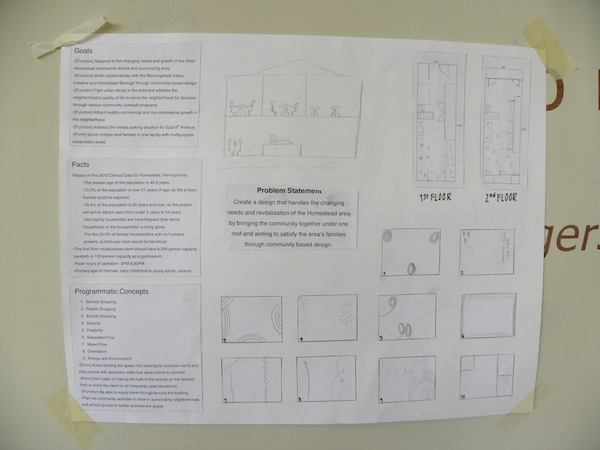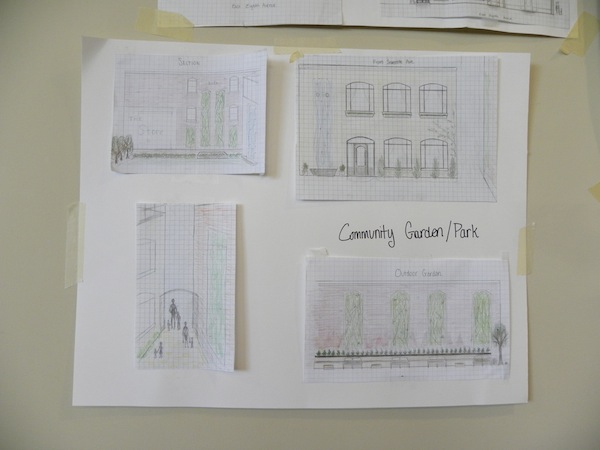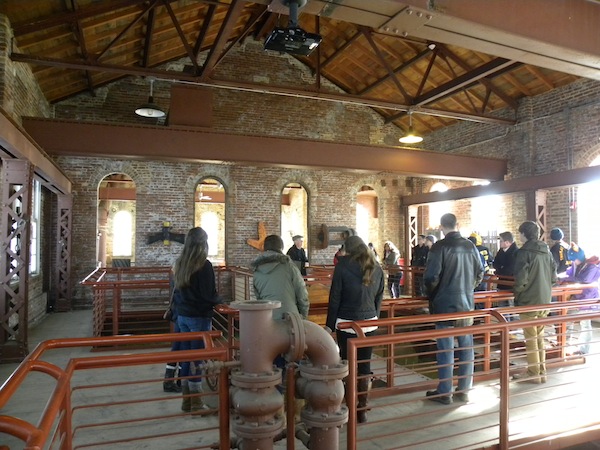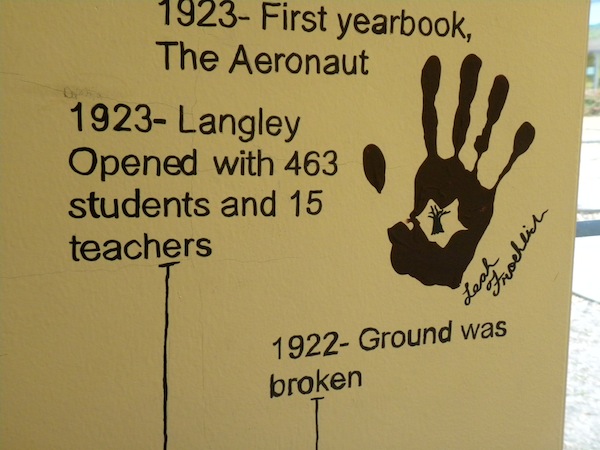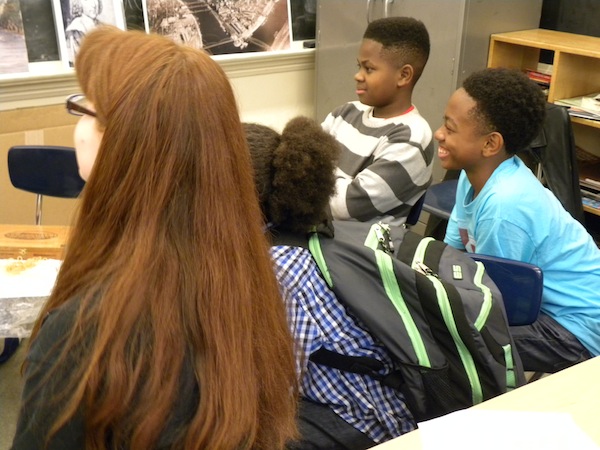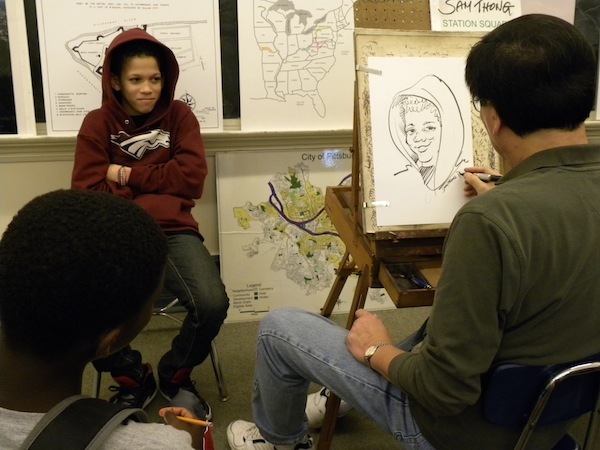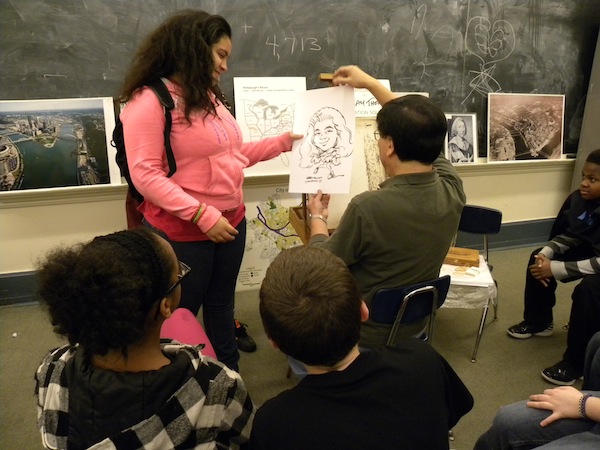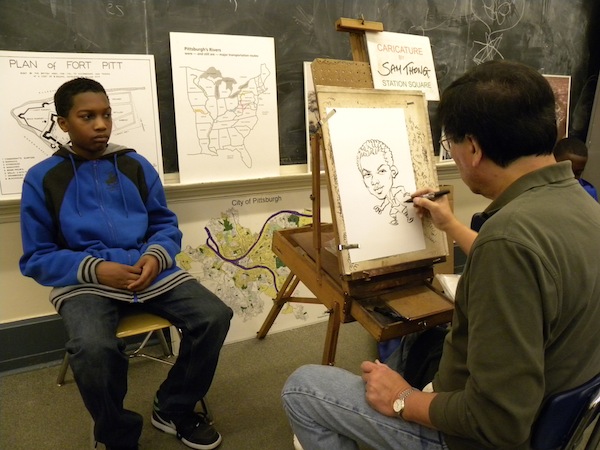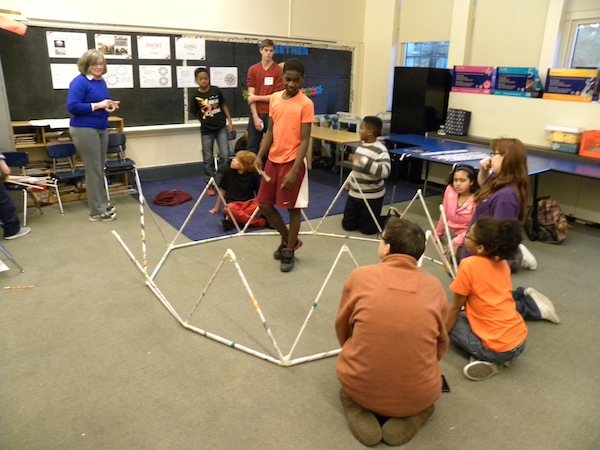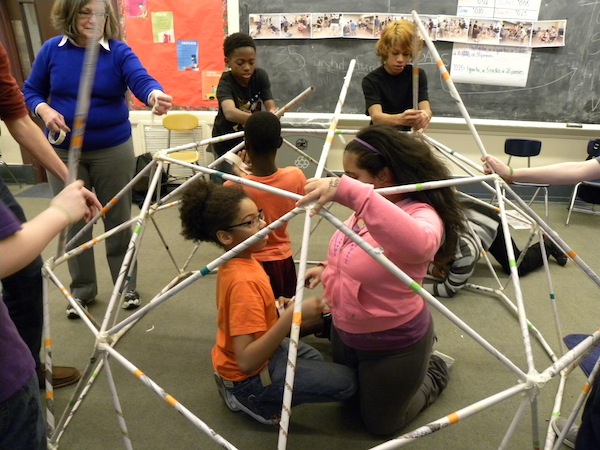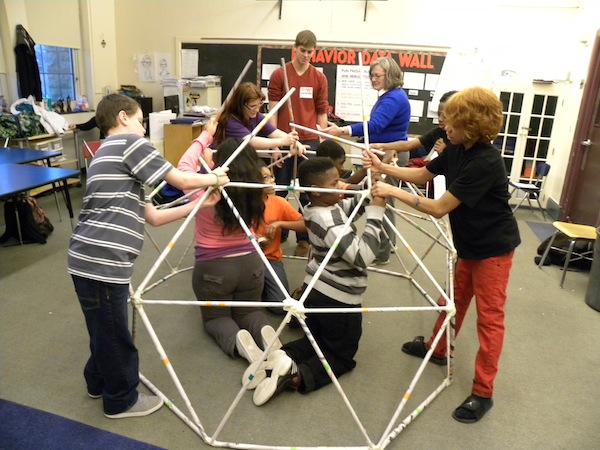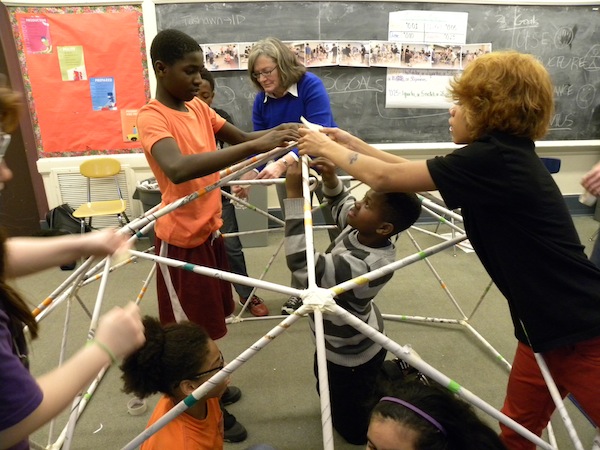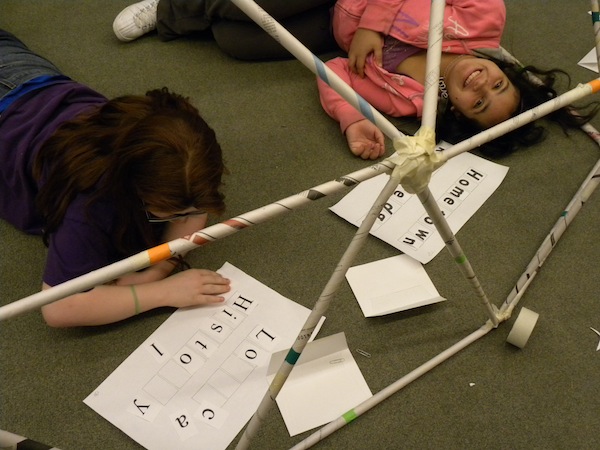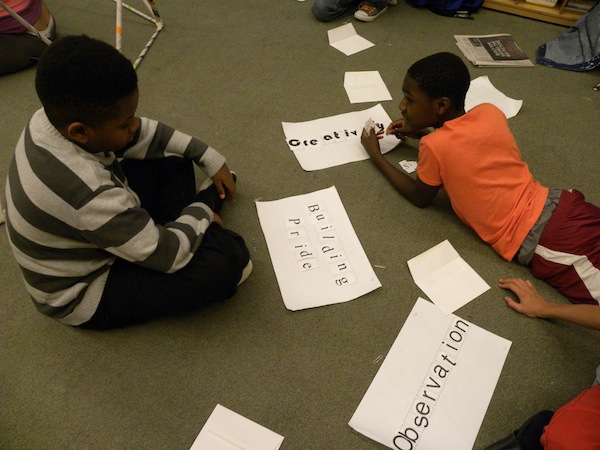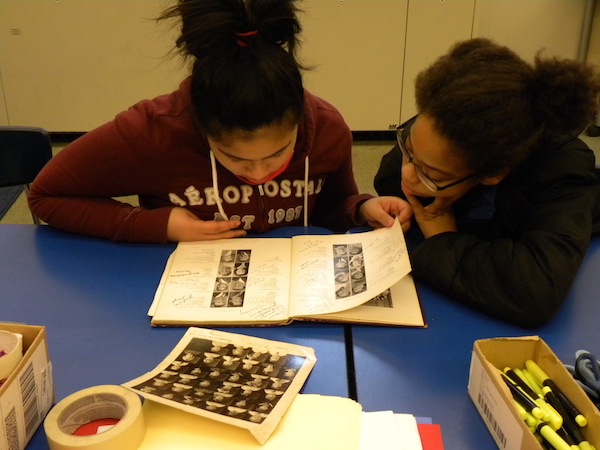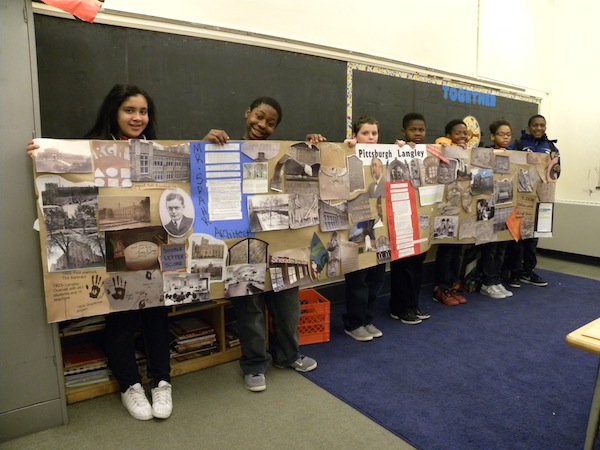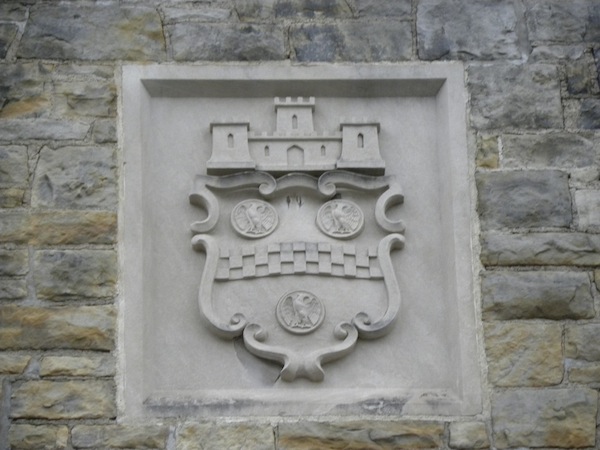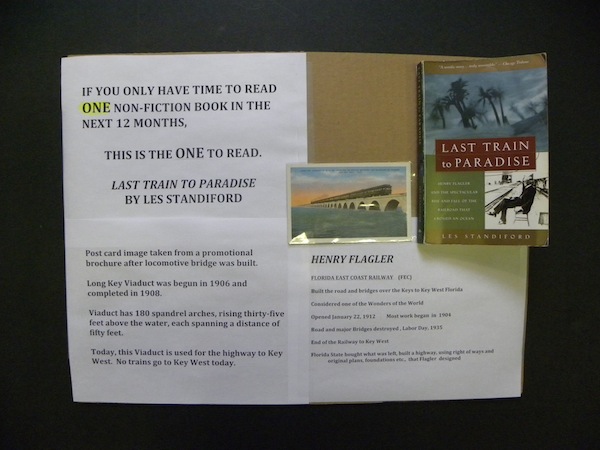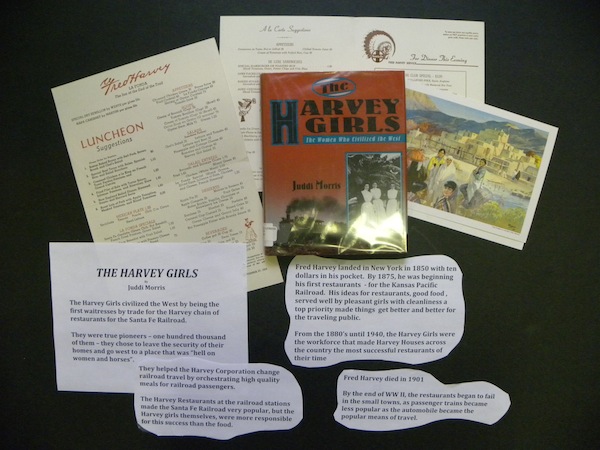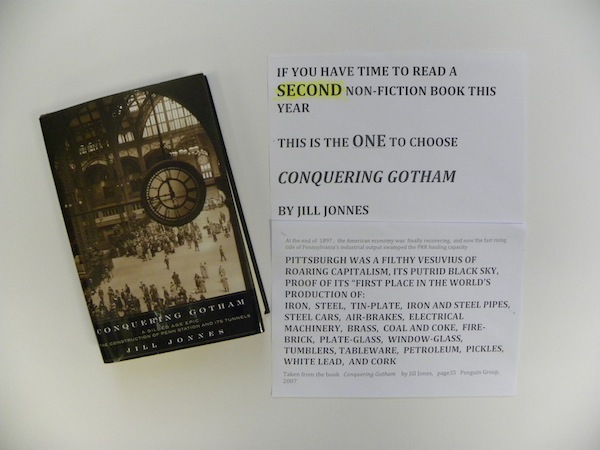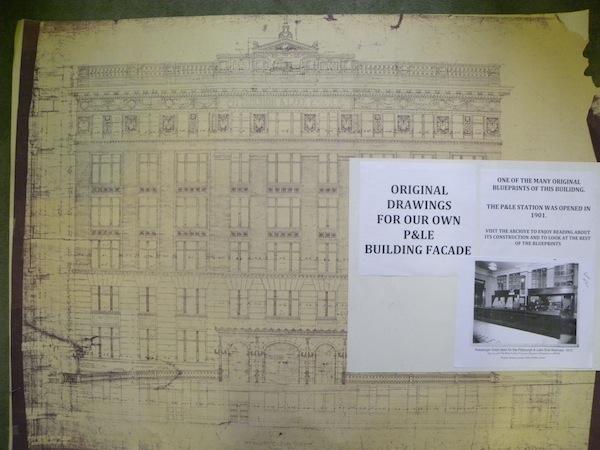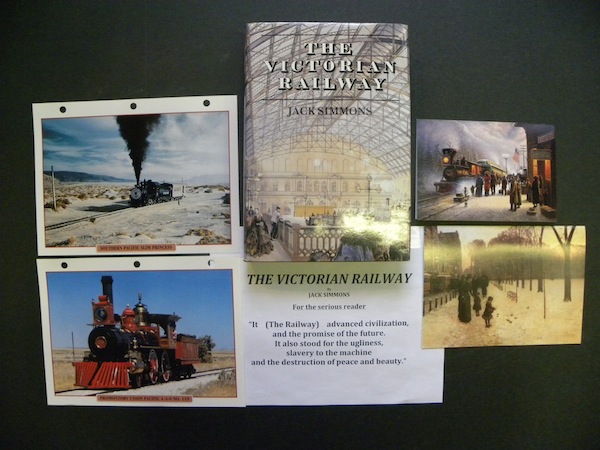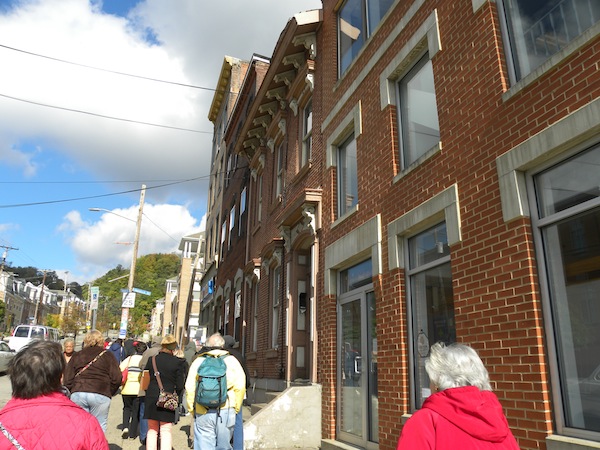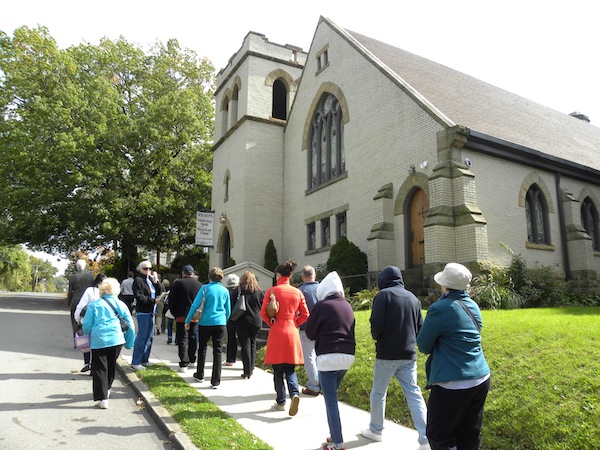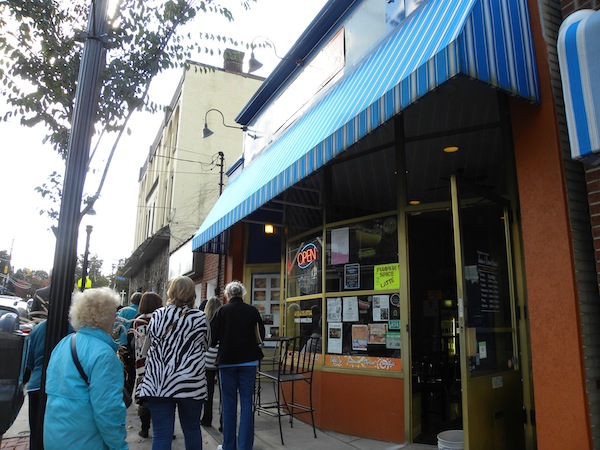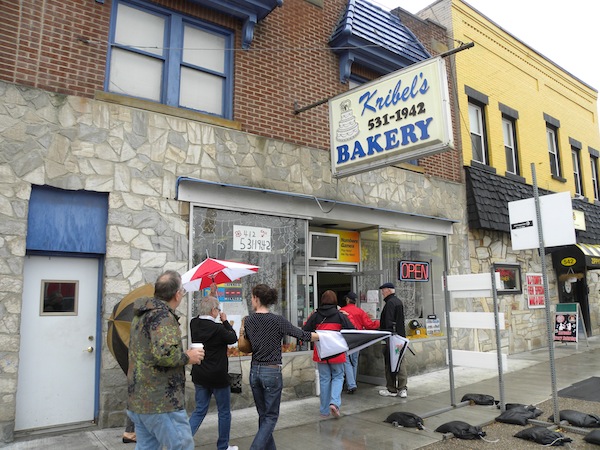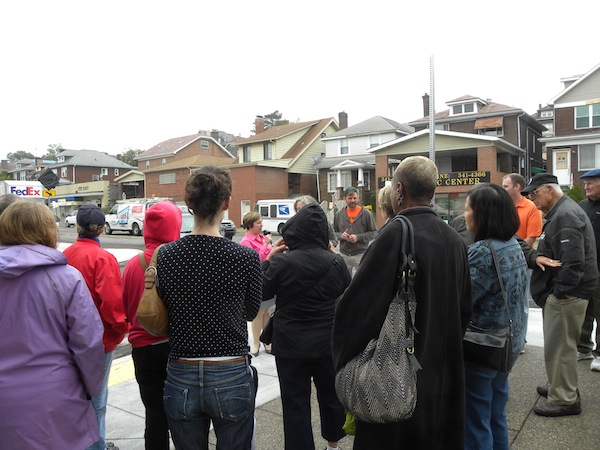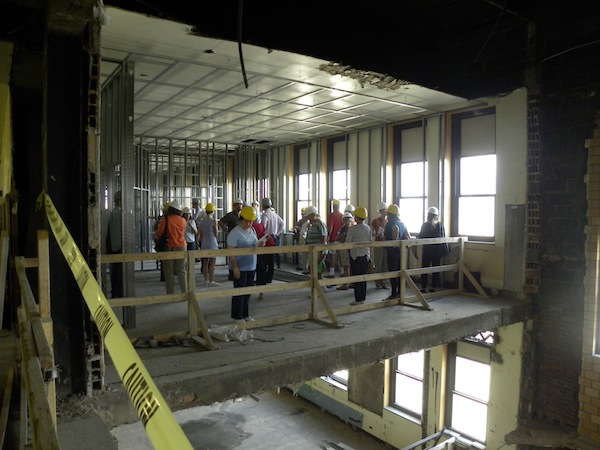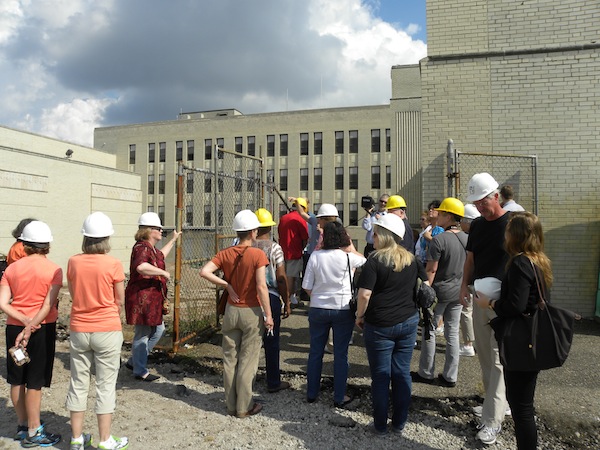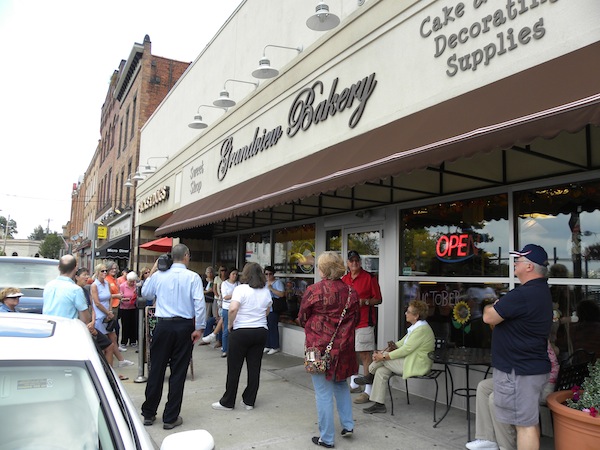
Category Archive: PHLF News
-
PPS Students Create Poetry and Art and Discuss Careers
Experiences beyond the classroom enrich what happens inside of the classroom. . . . Thank you for allowing so many of our students to see life and culture beyond the confines of their neighborhoods––and to experience, grow, and learn in such a positive, fulfilling, and rewarding way. ––Pittsburgh Banksville Teacher
Pittsburgh Banksville (Grade 5) and Pittsburgh West Liberty (Grade 4) participated in January in PHLF’s Building Pride/Building Character EITC (Educational Improvement Tax Credit) program, and Pittsburgh Langley (Middle) participated in an after-school enrichment program, “Going Places: Building Skills and Exploring Architecture.”
Below is a gallery of photos from the event.
As a result, students from Banksville created poetry and artwork that will be published in a book that students will be given to keep; West Liberty students imagined being bankers, lawyers, small business owners, architects, and stonemasons, among other careers; and Langley students toured the Carpenter’s Training Center to see how math, science, art, and language arts are at the core of the building professions. We thank Rick Okraszewski, training director, for sharing his time and expertise with Langley students.
“These programs are made possible through contributions from the following businesses and private foundations,” said Executive Director Louise Sturgess. “We thank the Alfred M. Oppenheimer Memorial Fund of The Pittsburgh Foundation; McSwigan Family Foundation; Huntington Bank; PNC Bank; First National Bank of Pennsylvania; BNY Mellon; ESB Bank; Eat’n Park Hospitality Group, Inc.; Hefren-Tillotson, Inc.; and Maher Duessel, CPA, for their generous support.”
-
Fairbanks Feature: Railroad “Works”
James D. Van Trump Library | Frank B. Fairbanks Transportation Archive | Fairbanks Features
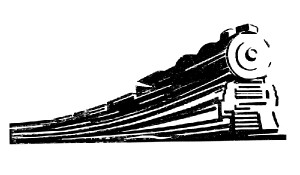 Showcasing a variety of materials located in the Frank B. Fairbanks Rail Transportation Archive
Showcasing a variety of materials located in the Frank B. Fairbanks Rail Transportation ArchiveNo. 20 Presentation
Fairbanks Feature: Railroad “Works”
The building of locomotives in the United States in the 1880s and up to the second World War was a tremendous business. Small locomotive works were merged with larger ones; these companies in turn merged with related industries, and businesses grew over night, thus creating the reasons why many cities came into being.
The Fairbanks Archive has some very interesting publications and collectable items from some of these early locomotive works companies. The Archive’s collection of materials from The Schenectady Locomotive Works (including the Schenectady Transit Company) and ALCO (in the General Electric era) are particularly significant.
The Schenectady Locomotive Company did not get off to an easy start, but by 1851, things seemed to be more stable and the business took hold. As the business grew, so did the town; rail lines came into being in the area and the town prospered. The Archive owns a perfect copy of the hardback 1897 catalogue, with this note on the front page:
In presenting this catalog, we invite attention to the fact that during the past five years our works have been practically rebuilt and very materially enlarged. Modern buildings have been erected and are equipped with the latest and most approved designs of electric cranes, compressed air-hoists, hydraulic flanging plant, etc., and new machine tools throughout replace the old methods of manufacture. . . . We are prepared to submit proposals for locomotives of our own design for any class of service, or from specifications which may be submitted by railroad companies.
In 1901, the American Locomotive Company in Schenectady merged with the Schenectady Locomotive Company and seven others to become ALCO, with the company located in Schenectady; the seven companies closed over time. One of those seven companies was the Pittsburg Locomotive and Car Company, formed in 1865 by Andrew Carnegie. The Pittsburg Company was located in Allegheny City in the Chateau area. In 1919, the works were completely closed, and by 1925 had been sold to the Duquesne Light Company, which demolished all the buildings in 2010.
Due to the decline in locomotive building, ALCO phased out its locomotive works and in 1955 became ALCO Products. By 1964 ALCO was sold to the Worthington Corporation of Canada, which merged with the Studebaker company in 1967. By 1969, the company was defunct and closed.
The Archive has a good selection from the early Schenectady Works, the city itself, and its rail line and transit company. If any reader has ties to this area, the maps and pictures of this time, when the city was at its peak, would be of interest. Rail enthusiasts also would enjoy the locomotive and rail maps.
We have (and would be thrilled to add to) limited information on the Pittsburg Locomotive & Car Works in our own city. We also have materials on The Baldwin Locomotive Works and Vulcan Locomotive Works, and limited materials on the Shay, Cincinnati, Brooks, Lima, Davenport Locomotive Works. In “Another Train of Thought” (article No. 12), we recount the story of H. K. Porter & Co. of Lawrenceville, which was in this time frame also. A third early-area locomotive company in our area was the Westinghouse Machine Company.
The following photos show some of our Schenectady and ALCO materials for Archive patrons to enjoy:
- Book: Schenectady Locomotive Works, Schenectady New York, U.S.A., with a copy of the Dedication.
- Three copies of photographs in the American Locomotive Company brochure, “Growing with Schenectady,” copyright 1948.
- Schenectady Railway 1909, 1953, 1962
- Schenectady Trolley Co. 1910, 1952
- Examples of the many ALCO publications in the Fairbanks Archive
The Frank B. Fairbanks Rail Transportation Archive is open by appointment on Mondays, from 10:00 a.m. to 5:00 p.m. Use of the archive is free to PHLF members (one of the benefits!); non-members are assessed a $10 use fee.
The Archive is located on the fourth floor of The Landmarks Building at Station Square, in the offices of the Pittsburgh History & Landmarks Foundation.
To schedule an appointment, email the Librarian James Halttunen: James@phlf.org
-
Download and read the latest PHLF News
Download and read the lastest PHLF News, No 179, December 2013.
Click for complete PDF copy. -
500 Smithfield: Inside the Former Mellon Bank Building
During the summer of 2012, PNC Financial Services Group asked PHLF what we knew about the former Mellon Bank building, a City of Pittsburgh Historic Structure. The building was designed and built 1923-24; the New York architects were Trowbridge & Livingston, who designed the Gulf Building, in association with E. P. Mellon (a family member).
The exterior retains its original character but the interior was drastically altered in 2000 when the building opened as a Lord & Taylor Department Store (which closed in 2004). The expansive building now serves as a customer care center for PNC Financial Services Group, which moved in a staff of approximately 700 employees in November 2013.
PHLF provided photos of the interior before alterations, reproductions of architectural renderings of the exterior and interior, and directed PNC to the Trowbridge & Livingston Collection at Columbia University.
Four of the massive original columns were retained by Lord & Taylor and PNC has reused architectural elements: marble check- writing desks now serve as tables in the employee cafeteria; bronze and brass grilles, doors, and railings have become wall art; and some of the original chandeliers, copies of the architect’s drawings, and historic photos hang in the office areas.
In this building, PNC has created an excellent example of how modern interior design can be enriched with historical elements.
-
Architecture Apprentices Envision New Uses for a Vacant Lot
Sixteen students from various high schools throughout Allegheny County presented their concepts for a vacant lot on Eighth Avenue in Homestead during the final session on December 12, 2013 of PHLF’s Architectural Apprenticeship program.
“Each student came up with a concept that would help revitalize the historic main street, serve the community, and be sustainable,” said Louise Sturgess, executive director of PHLF. “Student concepts included an environmental center providing information on recycling coupled with an artists gallery and rooftop garden; a sports bar; a kid’s club and sandwich shop; a restaurant and brewery; a nightclub; a clothing store and restaurant; a used toy store and recreation center; a bike/repair shop; a bookshop/cafe/library; and a community center with an urban garden, rooftop garden, cafe/coffee shop, and space for yoga and technology classes.
James Washabaugh (Michael Baker) helped teach the class, and Katelyn Shearer (Urban Design Associates), Patrick Shattuck (Mon Valley Initiative), and Kelley Stroup (Historic Preservation) critiqued the student projects. Architects Bob Baumbach, Ray Bowman, Roger Hartung, and Richard Schmitz helped the students develop their designs, and David Lewis, urban designer, inspired them.
Below is a gallery of 50 photos from the Architecture Apprenticeship program that consisted of five full-day classes over a three-month period.
The apprenticeship, sponsored by the Allegheny Intermediate Unit, is also supported through funding from the Alfred M. Oppenheimer Memorial Fund of The Pittsburgh Foundation and McSwigan Family Foundation. PHLF has offered the Architecture Apprenticeship program every year since 1984.
-
After-School Enrichment at Pittsburgh Langley
Thanks to funding support from the McSwigan Family Foundation and Alfred M. Oppenheimer Memorial Fund of The Pittsburgh Foundation, PHLF created a new after-school enrichment program for middle school students and is piloting it with a group of 12 students from Pittsburgh Langley.
Going Places: Building Skills and Exploring Architecture is a series of 12 weekly workshops that give students the chance to explore their school, community, and city, and strengthen their academic and teamwork skills in the process.
In November, students got acquainted with each other through a caricature-drawing exercise, constructed a geodesic dome out of newspaper and masking tape, and explored Langley School and created a mural. In December, they will explore their community aboard Molly’s Trolley, participate in PHLF’s career awareness program, and visit Carnegie Mellon University.
Below is a gallery of 20 photos of student activities.
-
Fairbanks Feature: The Victorians and the Turn of the Century
James D. Van Trump Library | Frank B. Fairbanks Transportation Archive | Fairbanks Features
 Showcasing a variety of materials located in the Frank B. Fairbanks Rail Transportation Archive
Showcasing a variety of materials located in the Frank B. Fairbanks Rail Transportation ArchiveNo. 19 Presentation
Fairbanks Feature: The Victorians and the Turn of the Century
In the history of the world, there are certain times when big changes happen almost over night. Life that has plodded along, in much the same way for many years, suddenly erupts with something so new and different that almost all facets of life are affected. Many times this sudden change occurs because of developments in weaponry or machinery.
One such great change in the world came about with the invention of the train. At first, advancement came slowly, and in the United States, this escalated to a period of time known as the Gilded Age. The Gilded Age is recognized as the period of time in our nation from the end of the Civil War until the “Great Crash of 1929.” The Gilded Age did not start out so “gilded,” but certainly ended with a flourish. The “Pre” and “Gilded Age” can roughly be shown in three time frames, using the architectural style of railroad stations as guidelines. As these stations were built across our country in these time divisions, city and town development, social mores, life styles, attitudes, and dress changed noticeably.
The first “generation” of great change due to the invention of the train can be shown in the railroad station buildings in the 1830s through the 1840s. At first, railroad stations were merely large barns, spare and functional, designed to store idle engines and the freight of passenger carriages and to be places to stop to pick up passengers. These buildings were built of wood, and did not include any amenities for the passengers: no platforms, no waiting rooms, no shops, no restaurants. These buildings were so crude, that they were outmoded by the mid-century.
During the 1850s to the late 1880s, a change occurred in the design of railroad stations. These second-generation buildings were mostly constructed using rough-hewn stone or bricks; a few passenger amenities began to appear. Many stations had architectural flourishes such as turrets, gables, mansard roofs, and in larger communities, a soaring clock tower that would be visible from a considerable distance. The third-generation railroad stations can truly be termed “Gilded Age.” From the 1890s stretching into the 1930s, opulent stations were built to reflect America’s new wealth and world power. These magnificent stations were almost all built in the Beaux Arts style, such as our P&LE railroad station (now housing the Grand Concourse Restaurant at Station Square and the PHLF offices with its Frank Fairbanks Archive!). Many stations incorporated stained glass windows, turrets, and Gothic features of all kinds. Passenger amenities were overwhelming, and became an expected way of life for the traveling public.
The following photos show samples of our “Gilded Age” materials for Archive patrons to enjoy:
- Last Train to Paradise is an absolutely spell binding book. This small paperback will keep you reading, even when you should be doing something else. The work and effort and discouragements recorded will make you wonder how the end result could ever have been accomplished.
- The original “Harvey Girls” are no more––but what a legacy they left. If any one reading this article had a “Harvey Girl” in their family’s past, please contact the Archive office so your relative’s name and work area can be recorded in our ongoing rail biography materials.
- Conquering Gotham, a second highly recommended book, takes longer to read, but it will reward the reader many times over for the insights into the men and their thinking of this period of time. Part of a quote from page 35 hits us here at home––“Pittsburgh was a filthy Vesuvius of roaring capitalism, its putrid black sky proof of its ‘first place in the world’s production of–––’ ”
- This is a blueprint from our collection of original drawings for the interior and exterior of the 1901 P&LE Station Building. The Beaux-Arts masterpiece is now the location of the Grand Concourse Restaurant, Pittsburgh History & Landmarks Foundation (and its Fairbanks Archive), and other offices.
- For those who have the time and interest to read a serious presentation on the Victorian Age in general, and the railroad in particular, The Victorian Railway would be the book. Well researched and documented, this one book will not fail to give the reader a most satisfying and in-depth knowledge of the subject
The Frank B. Fairbanks Rail Transportation Archive is open by appointment on Mondays, from 10:00 a.m. to 5:00 p.m. Use of the archive is free to PHLF members (one of the benefits!); non-members are assessed a $10 use fee.
The Archive is located on the fourth floor of The Landmarks Building at Station Square, in the offices of the Pittsburgh History & Landmarks Foundation.
To schedule an appointment, email the Librarian James Halttunen: James@phlf.org
-
Main Street Tours Reveal the Heart of Six Pittsburgh Communities
For the fourth consecutive year, the Urban Redevelopment Authority and PHLF sponsored a series of free public walking tours in September and October featuring city main streets. A total of 170 people attended the tours this season to South Side, the Hill District, Mt. Washington, Brookline, Brighton Heights, and North Side.
“These tours focused on the heart of each community,” said Education Coordinator Karen Cahall, and helped people look at buildings and neighborhoods in a whole new way.” Representatives from each community pointed out new businesses, long-established family-owned businesses, new housing, and restored housing, and discussed major plans on the drawing board.
PHLF’s Oct E-news included summaries of the South Side and Hill District walking tours. Brief summaries of the four October walking tours are described below (and photos follow).
Mt. Washington––Shiloh Street Area
On Friday, October 4, we enjoyed the view of the city from Mt. Washington before beginning our walk along Shiloh Street. James Eash, Director of Economic Development for the Mt. Washington CDC, Josette Fitzgibbons, Mainstreets/Elm Street Coordinator for the URA, Louise Sturgess, Executive Director of PHLF, and Karen Cahall, Education Coordinator for PHLF, provided commentary as we toured. We stopped at the Grandview Bakery to hear how URA assistance helped the owner find her location and start her business. The URA and Mt. Washington CDC are working to improve façades and signage along the street. From there, after a brief stop of the Mt. Washington CDC to learn more about the Emerald View Park trail system, participants walked up to Prospect School for a hard-hat tour of the renovation in progress. A.M. Rodriguez Associates is creating 67 apartments in the former school, designed in 1931 by M. M. Steen of James T. Steen & Sons––and one of the 53 featured sites in PHLF’s new guidebook, Pittsburgh Architecture in the Twentieth Century. The Lofts of Mount Washington will open in 2014.
Brookline––Bookline Boulevard
Friday, October 11 was our day to explore the business district of Brookline. Josette Fitzgibbons, URA, provided commentary about URA involvement in the area along with Nathan Mallory, Owner of Cannon Coffee and local activist for Brookline development, Steve Salas, Brookline resident who has researched Brookline history, and Karen Cahall, PHLF. The tour included information about the URA façade and business improvement programs as we visited Cannon Coffee, walked through the LEED-certified Carnegie Library of Pittsburgh–Brookline branch, and enjoyed a pastry taste at Kriebel’s Bakery in business for over 66 years. The business district is undergoing a transformation since Brookline Boulevard, the main street through the business district and former trolley way, is being redesigned to calm traffic and encourage drivers to stop and enjoy what Brookline has to offer.
Brighton Heights––California Avenue
The Brighton Heights business district along California Avenue was the focus of the tour on October 18. Joan Bellisario, treasurer of the Brighton Heights Citizens Federation (BHCF) and John Belch, local researcher/historian and recording secretary of BHCF, together with Josette Fitzgibbons, URA, and Karen Cahall, PHLF, served as tour guides. Ed Gergerich, Brighton Heights resident and BHCF member, added comments. The group walked the California Avenue business district learning about the only surviving butcher shop in the city and saw the three Frederick Osterling designed buildings that have been renovated as homes. Around the corner up Termon Avenue, Pastor Gary Palladin invited the group to tour Hosanna Church–a Craftsman-style Gothic church. The final stop was the Oliver House, a historic home in Brighton Heights, that has been beautifully restored by Marilyn and Jim Malanos. The group was treated to tea and cookies. Brighton Heights rolled out the red carpet for this tour.
North Side––Federal Street Area
On Friday, October 25, a group of 45 participants was welcomed at the Carnegie Library of Pittsburgh–North Side branch. Carlton Stout, Library Manager, welcomed our group to the Allegheny City room, where historic photographs of the area were displayed. From there, Kyra Strassman, Director of Mainstreets for the URA, and Tom Hardy, Palo Alto Partners and consultant to the Central Northside Neighborhood Council for development of the Garden Theater block, with Karen Cahall, PHLF, led the group up Federal Street to the residential development there and then to North Avenue to the Garden Theater Block and into Allegheny Commons. In the Commons, Kyra and Tom talked about plans for the Garden Theater block which include a restaurant by Piccolo Forno. Alida Baker, Director of the Allegheny Commons Park Restoration through the Northside Leadership Conference, shared the restoration story of the park and proudly announced that the Allegheny Commons had just been approved for listing on the National Register of Historic Places. She shared drawings of the plans to return the fountain to the northeast corner of the park (near Allegheny General Hospital) and talked about the QR codes project to be accessed through smart phones. This tour was a great ending to the series.
PHLF thanks all those who participated in the fall tour series.

